Gunvor Nelson’s MOON POOL is one of the films in the shorts programme of “Short Nights: The Dark and the Deep” at the Metropolitan Museum of Art on Sunday, June 29th. Curated by Stephanie Wuertz.
Programme:
Work distributed by Filmform


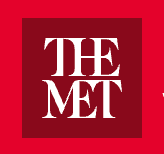
The Met - The Metropolitan Museum of Modern Art
Gunvor Nelson’s MOON POOL is one of the films in the shorts programme of “Short Nights: The Dark and the Deep” at the Metropolitan Museum of Art on Sunday, June 29th. Curated by Stephanie Wuertz.
Programme:
Work distributed by Filmform
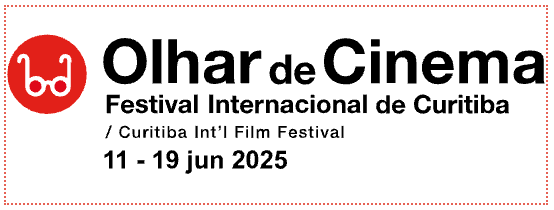
Ohar de Cinema / Curitiba International Film Festival 2025
The legendary Gunvor Nelson, who recently passed away, is honored in the section “Classics” of the international film festival Olhar de Cinema, June 11th – 19th, in Curitiba, Brasil. Her definitive breakthrough work MY NAME IS OONA has an evening screening at two different cinemas: June 14th at Cine Guarani and 15th at Cine Passeio Luz.
Programme:
Work distributed by Filmform
SYNOPSIS
In tribute to Swedish filmmaker Gunvor Nelson, who passed away in January this year, Olhar de Cinema presents one of her most renowned films, regarded as an important touchstone in American avant-garde cinema of the 1960s and ’70s. In this intimate piece, created with her own daughter, overlapping images, repeated words, and the sonic disintegration of a name evoke the rhythmic experience of childhood – blending dreams, play, and the free exploration of the world. (C.M.)
DIRECTOR
Gunvor Nelson was one of the most celebrated filmmakers in the American avant-garde scene. A Swedish artist who settled in California, Nelson passed away earlier this year, leaving behind a distinctive body of work often shaped by personal experiences, as seen in My Name Is Oona (1969) and Moons Pool (1973). In the 1990s, she returned to Sweden, embraced video art, and was rediscovered within the art world as a major influence in the visual arts. She also taught for two decades at the San Francisco Art Institute, leaving a lasting impact on generations of students.

Lustholmen Festival 2025
Två verk ur Filmforms katalog utgör programmet “Hur man bygger en nation: en film- och samtalskväll” som inleds kl 19 torsdagen den 12 juni på Moderna Dansteatern. Evenemanget ingår i Lustholmen Festival 2025 som pågår 11 – 16 juni. Visningsplatsen, den lilla ön Skeppsholmen, är intrikat i och med sin militära historia, eftersom programmet utforskar relationen mellan konst och kultur å ena sidan och krig å den andra. Den första filmen – Sicherheit av Saskia Holmkvist, Ellen Nyman och Oprea Corina – kontextualiserar Sveriges vapenindustri i bland annat det koloniala nuet. I Shauheen Daneshfars Scented Rooms visas hur det lilla, teaters öde efter den islamiska revolutionen, berättar om det stora, regimens försök att göra om landets kulturella identitet. Curaterat av Mmabatho Thobejane. Visningen efterföljs av ett modererat samtal.
Filmprogram:
Verk ur Filmforms distributionskatalog
Hur man bygger en nation: en film- och samtalskväll i samarbete mellan Filmform och MDT
Med utgångspunkt i Skeppsholmens militära historia utforskar detta filmprogram, med material ur Filmforms arkiv, relationen mellan konst och kultur – och krig och beväpning. Vi undersöker hur dessa sfärer samverkar och används som verktyg i skapandet och förstärkandet av nationer.
Just nu bevittnar vi hur konst och kultur systematiskt får minskat stöd, samtidigt som de nationella försvarsbudgetarna växer – ofta på bekostnad av just kultur- och välfärdsprogram. Och det sker i länder i det globala norr, inte minst i Sverige. När staten sanktionerar förstörelse eller nedmontering av konst har det historiskt ofta varit ett sätt att omdefiniera sig själv och symboliskt försvara sin föreställda identitet. Detta avspeglas i ökade militärbudgetar och en tilltagande militarisering och övervakning i vår vardag. På så vis sträcker sig statens gränser – som vi ofta tänker oss endast som linjer på kartor eller i landskap – även till våra kroppar, beteenden och konstkanon. Staten försvarar sig både inifrån och utifrån, med både mjuka och hårda medel.
I samtal med filmerna Sicherheit av Saskia Holmkvist, Ellen Nyman & Oprea Corina och Scented Rooms av Shauheen Daneshfar fördjupar vi oss i dessa frågor, och fler.
Efter filmvisningen följer ett modererat samtal som tar avstamp i filmkvällens tematik.
Program
19:00 – 20:00: Sicherheit av Saskia Holmkvist, Ellen Nyman & Oprea Corina och Scented Rooms av Shauheen Daneshfar
20:15 – 20:45: Modererat samtal. Gäster meddelas senare.
SICHERHEIT
av Saskia Holmkvist, Ellen Nyman, Oprea Corina
Sverige är, räknat per capita, en av världens största vapenexportörer – samtidigt som landet marknadsför sig som en fredsnation på den globala scenen. I filmen Sicherheit (tyska för ”säkerhet”) bygger upphovspersonerna, som en del av filmens narrativ, en kopia av ett av Sveriges mest sålda handhållna vapen. Verket är skapat i samarbete mellan Saskia Holmkvist, Ellen Nyman och Corina Oprea och lyfter fram hur den koloniala moderniteten konstrueras i den svenska självbilden.
Genom ett forskningsbaserat arbetssätt försöker filmskaparna ge den svenska vapenindustrins bild ett kontextuellt djup. Genom att knyta den till människor och platser som är viktiga för vapenproduktionen – som Karlskoga, Luleå och Göteborg – samt till händelser vars visuella och tematiska skärningspunkter visar hur västvärldens säkerhetsbegrepp hänger samman med migrationsvägar, sätts historien på prov i ljuset av samtiden. Filmen skapar förbindelser mellan etablerade diskurser och öppnar för transkulturella och politiska omtolkningar.
Filmens titel refererar till sociologen Zygmunt Baumans användning av begreppet Sicherheit, där han beskriver hur säkerhetslösningar bygger på en falsk trygghetskänsla – som endast kan ”kompenseras” med mer säkerhet, eftersom de i sig skapar mer rädsla, vilket i sin tur driver på konflikteskalering. I arbetet med filmen kopplas frågor om säkerhet, migration och vapenexport samman för att närma sig Sveriges självbild.
Språk: Svenska, engelska, serbiska och arabiska
Textning: Engelska
Längd: 21:57 min
År: 2017
ABOUT THE ARTISTS
Saskia Holmkvist
Saskia Holmkvists konstnärliga praktik kretsar kring att undersöka översättningens gränser med utgångspunkt i översättandets metoder och hur dessa påverkar relationer och historiska förlopp – särskilt med avseende på handlingsutrymme och agens. Hennes verk kombinerar inslag av etnografi och teater, och resulterar i filmer och performanceverk som relaterar till tidigare konstverk, språk och omstridda historiska narrativ. Genom att zooma in på gester, fragment och skev information skapar hon förskjutningar i historieskrivningen, och performativa översättningar blir en del av praktikens estetiska och teoretiska väv.
Hennes arbete bygger på långsiktig research, där skapandet alltid utgår från samarbeten med människor från olika bakgrunder över längre tidsperioder. Dessa personer – som ofta också blir vänner – betraktar Holmkvist som de verkliga aktörerna för det transformativa i verken. Tillsammans skapar de icke-linjära narrativ som föreslår alternativa läsningar och möjligheter, där dokumentärt material ställs mot fiktion och muntligt berättande.
Hon arbetar i en cirkulär förbindande rörelse, där teman som historisk utplåning och översättningens begränsningar knyts samman genom kritiskt lyssnande, spekulativa samtal och repetitioner – och gestaltas i performance och filminstallationer. Exempel på detta återfinns i verk som Margaret (Back Translation), Blind Understanding – New Commentary (2009–2019), Procession Action Tour (2018), samt i tidigare videoverk som System (2001) och Interview with Saskia Holmkvist (2005).
Corina Oprea
Corina Oprea är curator, redaktör och pedagog med fokus på samtidskonst, visuell kultur och performance. Hon är medredaktör för boken Climate: Our Right to Breathe, och har varit redaktör för L’Internationale Online, den digitala plattformen för forskning och konst inom ett nätverk av över 15 ledande europeiska museer och konstinstitutioner. Hon har också varit universitetslektor vid HDK-Valand i Göteborg.
Mellan 2017 och 2018 var hon konstnärlig ledare för Konsthall C i Stockholm, med ett program kring avkolonisering i Norden. Corina har en doktorsexamen från University of Loughborough i Storbritannien, med avhandlingen The End of the Curator – on curatorial acts as collective production of knowledge. Hon är även curator för Timișoara 2023 – Europeisk kulturhuvudstad och för den storskaliga invigningsutställningen Chronic desire – Sete cronică. Född 1981 i Bukarest, bor och arbetar hon i Stockholm.
Ellen Nyman
Ellen Nyman är en svensk skådespelare, regissör och dramatiker, född 1971 och utbildad vid Skådespelarskolan på Århus Teater 1997. Hon har varit verksam i både Danmark och Sverige och medverkat i över 30 teateruppsättningar, ett flertal filmer, tv-produktioner och performanceverk.
Utöver sitt arbete på scen och film har hon skapat egna konstprojekt – ofta i form av politiska aktioner, happenings och videoverk. Hennes verk har ställts ut på flera museer och hon har undervisat vid olika konsthögskolor samt varit verksam som föreläsare, debattör och översättare.
För närvarande är Ellen bosatt i Sverige, där hon har regisserat vid bland annat Malmö Stadsteater, Teater Tribunalen och Folkoperan.
SCENTED ROOMS
År 1979, under och efter den islamiska revolutionen i Iran, sattes ett stort antal biografer och teaterscener i brand av extremistiska revolutionärer eller stängdes ner för gott. Många konstnärer och kulturarbetare tvingades därför att överge sina yrken. Detta fenomen kan ses som ett försök från regeringens sida att ytterligare omforma landets kulturella identitet. En av de teatrar som stängdes var Tamashakhaneh Tehran, landets äldsta moderna teater byggd 1915. Genom att återvända till denna teater vill filmen rikta uppmärksamheten mot en kvävd social kultur. Genom tålmodiga observationer och metaforiska uttryck förs det här bortglömda temat åter i ljuset.
Förutom att referera till historiska och faktiska händelser genom arkivmaterial och intervjuer, använder konstnären poetisk text och bildspråk samt koreograferade inslag för att frilägga det abstrakta kollektiva minnet av teatern och den tidsepoken. Syftet är att bjuda in publiken till att bevittna hur något som länge varit tyst får uttryck igen.
Scented Rooms berättar sin historia genom poetiskt och metaforiskt språk, genom att återvända till teaterns interiöra arkitektur, samt genom att bläddra bland arkivmaterial och historiska skeenden. Filmen betraktar övergivna objekt som finns kvar i byggnaden och visar både originalinspelningar från tiden och iscensättningar filmade i en teatersal i Stockholm – som representerar de skådespelare som förtryckts och förbjudits att arbeta. Genom intervjuer med människor lyfts dåtida händelser fram. Filmen undviker en rent didaktisk ton och förhöjer istället de faktabaserade referenserna med ett poetiskt bildspråk.
Genom att använda 35mm-film eftersträvar filmen en särskild estetik som kan förmedla minnets känsla från den tiden. Då celluloidfilmen genomgått en nedbrytningsprocess fungerar den i sig som en medskapare till bilden och minnet av teatern.
Språk: persiska
Undertexter: engelska
Längd: 30:00 min
År: 2023
ABOUT THE ARTIST
Shauheen Daneshfar
Född i Teheran, Iran 1988, är Shauheen Daneshfar en konstnär, filmskapare och fotograf som arbetar mellan Stockholm och Teheran. Med ett fokus på analoga material undersöker hans verk minne, poetiska bilder, film och stillbilder samt deras korsningar. Hans arbeten använder olika material och verktyg såsom celluloidfilm, alternativa kemiska processer och andra typer av teknologiska enheter för att uppnå en poetisk och melankolisk estetik. Han studerade fotografi innan han gick med i den iranska ungdomsfilmsällskapet (IYCS) för att lära sig filmens alla aspekter. Hans kunskaper fördjupades genom en kandidatexamen i filmteknik vid Konstuniversitetet i Teheran och en masterexamen i Film och Media vid Stockholms konstnärliga högskola. Han var med och grundade det oberoende filmföretaget Rum Film, baserat i Stockholm.
On Hospitality – Layla al Attar and Hotel al Rasheed by the artist duo Behzad Khosravi Noori and Magnus Bärtås is screen at the Academy of Media Arts Cologne. It is one of the films in the seminar series “De/Constructing the Other”, which is run by the professors Matthias Müller and Daniel Burkhardt.
Programme:
Work distributed by Filmform
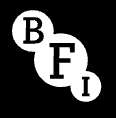
BFI
SCHMEERGUNTZ by Gunvor Nelson & Dorothy Wiley is part of the programme “Wanda and Her World” at the BFI Southbank. The screening is taking place on Thursday, June 5th. Curated by Giulia Saccogna.
Programme:
Work distributed by Filmform
Schmeerguntz
USA 1966. Directors Gunvor Nelson and Dorothy Wiley. 15min. Digital (restoration)
The Woman’s Film
USA 1970. Directors Louise Alaimo, Judy Smith, Ellen Sorren. 40min. Digital
Janie’s Janie
USA 1971. Directors Geri Ashur, Peter Barton, Marilyn Mulford, Stephanie Palewski. 25min. Digital
Across non-fiction and avant-garde film, women on the cusp of the feminist movement’s second wave began to analyse the problems they faced in their daily lives. These three films embodied an emergent collective feminist voice using distinct strategies: collage, disruption and self-narration. These incendiary films diagnosed and illuminated women’s shared oppressions through agitational montage of glossy advertising images and housework’s unglamorous muck in Schmeerguntz, and and strategies of feminist consciousness-raising in The Woman’s Film and Janie’s Janie.

UCL Urban Laboratory logo
Jyoti Mistry, artist and professor in film, speaks at UCL Urban Laboratory, a cross-disciplinary centre focused on urgent urban problems. The event “Itchy City: Film Practice as Exploratory Method in Urban Experience” takes place on Wednesday, June 4th, and circles around Mistry’s works When I Grow Up I Want to be a Black Man and i mike what i like, which are screened before a Q&A with the filmmaker, chaired by the professors Catalina Ortiz and Tim Waterman.
Filmprogram:
Verk ur Filmforms distributionskatalog
The allure of moving images to capture the rhythm of cities’ mechanisation and the pace of industrialisation is well captured throughout the history of cinema. The harmonisation of movements between transport, pedestrians, vendors and synchronisation of traffic is operatic as it is symphonic. But what if the pace and beat of a city is jazz; more riff and scat – expressions of cacophonies that attest to the impulses of survival, its underbelly exposed alongside the gleaming promises that are foiled. The itchy city congestion of “hustlers and hawkers” slips and glides between the bodies of passersby and dodge through the shadows of buildings – their “low frequency” counterpoint the high notes of urban grandeur.
This presentation draws on the film practice of Jyoti Mistry and her collaboration with spoken word artist Kgafela oa Magogodi, inviting the proposition of film practice as an expansive research form. Film practice not singularly as a mode of documentation or evidence gathering nor solely an instrument of story, but as an exploratory and expository method. What are the affordances of film practice to urban studies that enrich and expand an understanding of both and capture the experience of the urban?
The event includes the screening of ‘When I Grow Up I Want to be a Black Man’ (10 minutes) and ‘i mike what i like’ (50 minutes), followed by a 30 minute Q&A between Jyoti Mistry, Catalina Ortiz and Tim Waterman.
“Throughout the history of cinema, moving images have been used to show the energy and flow of city life. The harmonisation of movements between machines, people and traffic is as operatic as it is symphonic. But what if a city’s rhythm is more like jazz – messy, unpredictable and full of improvisation?”
Jyoti Mistry
University of Gothenburg
Speaker
Jyoti Mistry is Professor of Film at the University of Gothenburg. Her work explores film as research and artistic practice. Recent films include We Come in Peace, They Said (2024), which premiered at the Glasgow International Short Film Festival, Loving in Between (2023) at Locarno, and Cause of Death (2020) at Berlinale. Mistry’s current research focuses on indigenous Sámi schools in Sweden’s colonial history. She is a 2022 FilmForm Award recipient and a Leverhulme Visiting Professor at SOAS.
Chairs
Catalina Ortiz is Professor of Critical Urban Pedagogy and Director of UCL Urban Laboratory. She is an urbanist who is passionate about spatial justice. Her research uses decolonial and critical urban theory through knowledge co-production methodologies mainly in Latin American cities. Her work revolves around urban pedagogies, planning for equality and southern urbanisms. Her articles have been published in several journals including the International Journal of Urban and Regional Research, Planning Theory, Environment and Urbanization, Urban Studies, City, Cities, and Transactions of the Institute of British Geographers. She is one of the editors of Urban Studies and a trustee of the charity, Latin Elephant.
Tim Waterman is Professor of Landscape Theory and Inter-Programme Collaboration Director at the Bartlett School of Architecture, UCL. He is Vice-Chair (and former Chair) of the Landscape Research Group (LRG). He is also a former Vice-President of the European Council of Landscape Architecture Schools (ECLAS) and a former Non-Executive Director of the digital arts collective Furtherfield. He is currently working on a tetralogy of books on the world-making, image-making and taste-making imagination, the first of which is titled Reworlding: Planetarity and Design Imaginaries. He is the author of Fundamentals of Landscape Architecture, now in its second edition and translated into several languages, and, with Ed Wall, Urban Design, also translated into several languages. He has recently edited three collections: Landscape and Agency: Critical Essays with Ed Wall, the Routledge Handbook of Landscape and Food with Joshua Zeunert, and Landscape Citizenships with Jane Wolff and Ed Wall. His most recent book is The Landscape of Utopia: Writings on Everyday Life, Taste, Democracy, and Design (2022). His writing has appeared in a variety of journals including the Journal of Architecture and Landscape Architecture Magazine.
Konstakademien uppmärksammar Stig “Slas” Claessons 97-årsdag. Evenemanget den 2 juni inleds med kortfilmen Odjuret av Olov Grönstrand och Nils Olsén, som är en berättelse om rivningen av Klarakvarteren. Sedan fortsätter kvällen med en vandring runtom platserna kring Sergelhuset, där Konstakademiens utbildning låg. Curaterat av Nils Claesson och Mats Granberg.
Filmprogram:
Verk ur Filmforms distributionskatalog
Den 2 juni 2025 fyller Stig ”Slas” Claesson (1928-2008) 97 år. Vi firar hans födelsedag med en vandring i Klarakvarteren som försvann, och berättar om platser där Stig arbetade och studerade från 1945.
Vi inleder med att visa kortfilmen Odjuret om Sergelhuset från 1953, av Olov Grönstrand och Nils Olsén, plus bilder i Konstakademiens bibliotek, Fredsgatan 12/Jakobsgatan 27 C.
I centrum för berättelsen står Mejan, eller Sergelhuset, där Konstakademiens utbildning låg. Det var där Stig utbildade sig till konstnär och fick vänner för livet. Vi berättar om tre av hans kamrater från Konstakademien: Zenia Larsson (1922–2007), Birgitta Liljebladh (1924–2014) samt Svenolov Ehrén (1927–2004).
Då som nu var en högre konstnärlig utbildning en tummelplats för diskussioner om konst, liv, politik och aktivism. De unga konstnärerna ville ut i Europa.
Nils Claesson och Mats Granberg
Hållplatser på vandringen:
Inledning på Konstakademien, Fredsgatan 12/Jakobsgatan 27 C
Sergelminnet av Göran Strååt, Sergelgatan 33
Klara kyrkogård (Klara Folkets Hus, Klara Västra Kyrkogata 17 samt FiB:s redaktion, Klara Västra Kyrkogata 5)
Aftonbladets och Stockholms-Tidningens redaktioner samt Tennstopet i Klara, Vattugatan 8 resp 12
Lantbruksförbundets byggnadsförening, hörnet av Drottninggatan/Vattugatan
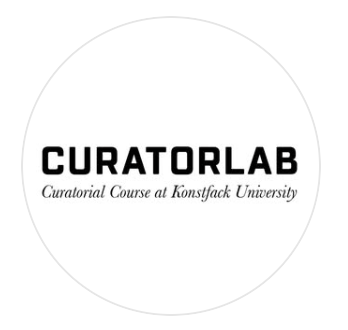
CuratorLab
Videoverket TRUE TO LIFE av avantgardelegendaren Gunvor Nelson visas på “Resonant Field” – festivalen som firar 25-årsjubileet av CuratorLab, internationella curatorutbildningen vid Konstfack. Filmen är en nervkittlande resa in i naturen i konstnärens egen trädgård i Kristinehamn. Visningen sker fredagen den 30 maj i ABF-huset, där filmen ackompanjeras av Felicia Sjögrens ljudperformance. Curaterat av Lucie Gottlieb och Felicia Sjögren.
Filmprogram:
Verk ur Filmforms distributionskatalog
-True to Life – an echo
With Gunvor Nelson and Felicia Sjögren
Curated by Lucie Gottlieb
19:00-20:00
Screening of True to Life (2006) by Gunvor Nelson, with a live sound performance by Felicia Sjögren. In True to Life, Nelson’s camera enters a quiet yet vibrant dialogue with the flowers in her garden — creafng a drama of colours, rhythm, life and death. Approaching the film as a score and acuned to the original noises, silences and in-betweens, Sjögren weaves its original sonic fabric into her live composition. An intimate audiovisual conversation on decay, return, and the fragile persistence of life unfolds.
Thanks to Filmform.
Gunvor Nelson
Gunvor Nelson (1931–2025) was a pioneering figure in American avant-garde cinema. Born in Kristinehamn, she moved to California in 1953, studying and later teaching at the San
Francisco Art Insitute. Her work, often described as “personal cinema,” merged intimate experiences with universal questions. Exploring feminism, family, memory and transformation,
Nelson left a lasting legacy in experimental film.
Felicia Sjögren
Felicia Sjögren is an artist working with sound and the camera. She has a background in ecoactivism where she spent over a decade working in different constellations of anarchist projects. She is currently studying Electroacoustic Composition at Royal College of Music in Stockholm. A deepened listening and the relafonship to place/space and time is a central aspect of Sjögren’s practice. FELICIA SJÖGREN

OFFoff logo
Fog Pumas by Gunvor Nelson and Dorothy Wiley is screened on Tuesday, May 20th, at Art Cinema OFFoff in Gent, Belgium. The film is included in the programme “Moving Statics: The Films of Arthur & Corinne Cantrill (III): The Knokke EXPRMNTL Connection”, curated by Ruben Demasure.
Programme:
Work distributed by Filmform
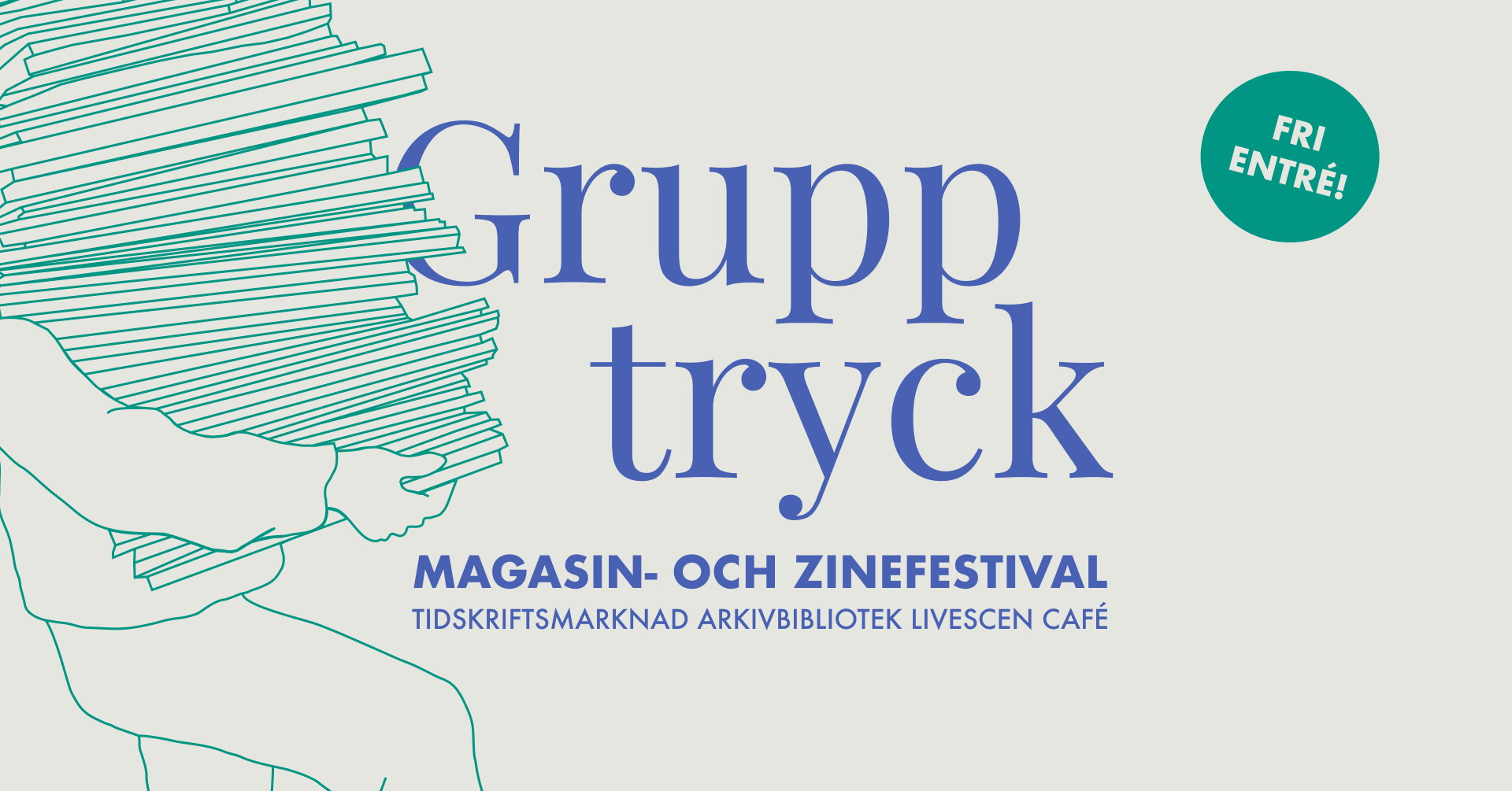
Grupptryck: magasin- och zinefestival
Den 17–18 maj arrangeras den första upplagan av Grupptryck: Magasin- och zinefestival på Hägerstensåsens medborgarhus i Stockholm. Som besökare kommer du kunna ta del av en omfattande marknad för egenutgivna magasin och zines, ett unikt scenprogram, samt ett arkivbibliotek med svenska kulturtidskrifter genom tiderna.
Som en del av festivalens arkivbibliotek kommer Simina Astilean och Dorinel Marcs Source Video Magazine (1995-2007) att visas. Den startade som Nordens enda konsttidskrift på video, och föddes ur behovet av ett forum som gav rättvisa åt videokonsten som explosionsartat växte under 90-talet.
Efter festivalhelgen kommer arkivbiblioteket att stå kvar på Hägerstensåsens medborgarhus till och med den 25 maj. Då kan du som missade festivalen eller vill besöka samlingen igen navigera dig igenom 12 år av Source Video Magazines historia – och bläddra i hundratals andra svenska tidskrifter, främst från 50-tal och framåt.
Grupptryck: Magasin- och zinefestival arrangeras av Tablå kulturförening. Grupptryck är ett projekt initierat av Tablå som ämnar att lyfta och sprida egenutgivna svenska magasin och zines; både digitalt och genom programverksamhet. Projektet genomförs med stöd av Kulturrådet. Läs mer om Tablå via www.tablasthlm.se.
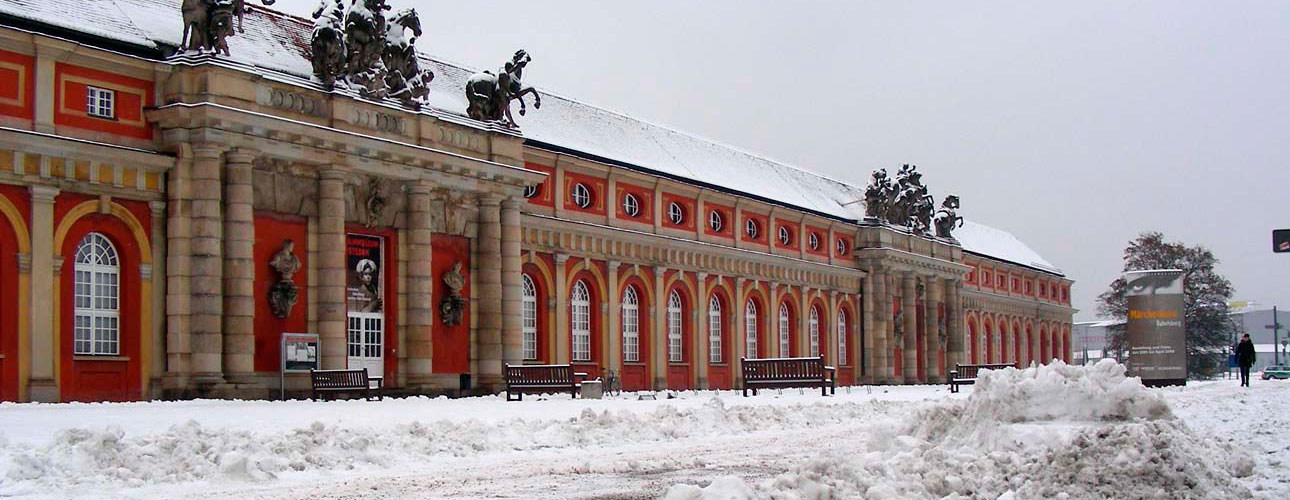
Filmmuseum Potsdam
Studie V/Interplay (Studie V/Växelspel) by Peter Weiss is screened at Filmmuseum Potsdam, located in the artist’s birth town. The event takes place on Saturday, May 17th, 2025. Curated by Sachiko Schmidt.
Programme:
Work distributed by Filmform

Filmkunstskolen i Kabelvåg
Den 15 maj ordnar Filmkunstskolen i Kabelvåg, Norge, en filmvisning för studenter av Lene Bergs Kopfkino. Bara några dagar tidigare visades där hennes Dagen står opp. Curaterat av Maria Bratt.
Filmprogram:
Verk ur Filmforms distributionskatalog
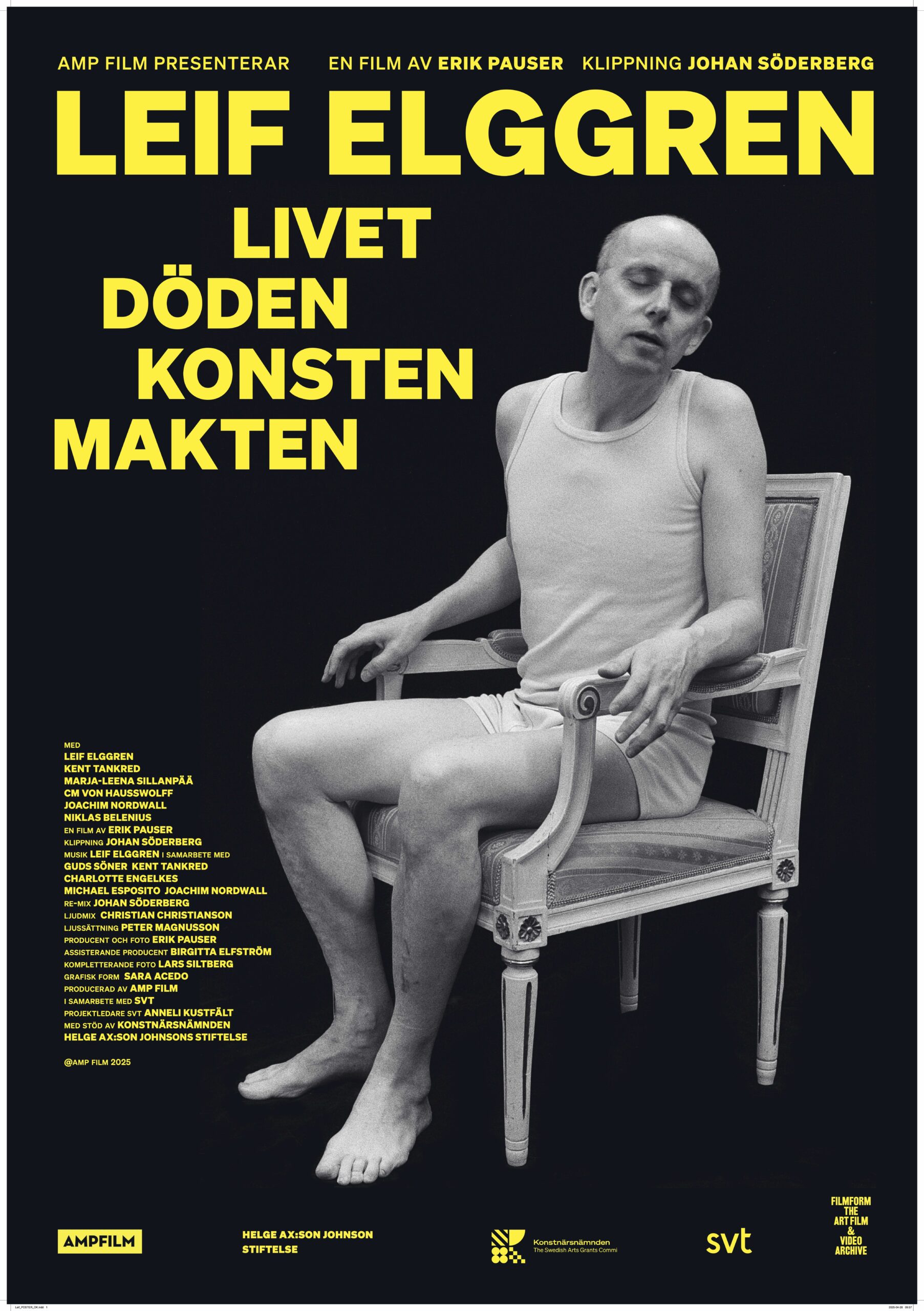
Poster: Leif Elggren – Livet Döden Konsten Makten
Välkommen på filmpremiär av Leif Elggren – Livet Döden Konsten Makten på Bio Aspen i Stockholm onsdag den 14 maj (dörrarna öppnar 18.00 filmstart kl. 18.30). Filmen är regisserad av Erik Pauser, klippt av Johan Söderberg, producerad av AMP film och distribuerad av Filmform.
Leif Elggren är en av Sveriges mest egensinniga och visionära konstnärer. I över fem decennier har han utforskat gränser mellan konst och politik, kropp och makt, verklighet och dröm. Dokumentärfilmen Livet Döden Konsten Makten (2025, 61 min) skildrar Elggrens mångsidiga konstnärskap som omfattar dans, performance, installationer, ljudverk och berättelser. Vi får ta del av hans konstnärliga vision och ett livslångt ifrågasättande av hierarkier och normer – allt med svart humor, skärpa och ömhet.
BILJETTINFO
Fri entré men föranmälan krävs för att få en garanterad plats. OBS! FULLBOKAT.
Plats: Bio Aspen, Hägerstensvägen 100, Stockholm
Tid: Dörrarna öppnas 18.00, filmen börjar 18.30 (OBS! Inga insläpp efter filmstart)
Erik Pauser är verksam som konstnär och filmare. Han har producerat och regisserat ett 20 tal längre internationella dokumentärer och ett flertal kortfilmer. Hans filmer har visats på TV och bio runt om i världen. Bland hans filmer kan nämnas; The Borneo Case, om Penanerna – den sista nomadstammen på Borneo, Maskinen, gjord tillsammans med Lars Tunbjörk samt Fiendens Ansikte om Vietnamkriget. Tillsammans med Johan Söderberg har han gjort en rad kortfilmer och långfilmen Lucky People Center International som producerades av Lars Jönsson och Memfis film. Erik Pausers konst har visats internationellt i många sammanhang. I Sverige har han haft separatutställningar på bland annat Konsthallen i Göteborg, Norrköpings Konstmuseum, Färgfabriken, Gävle konstcenter och Bildmuseet Umeå.
Johan Söderberg är en av Sveriges mest välrenommerade filmklippare och regissörer, känd för sitt arbete med både internationella storprojekt och uppmärksammade dokumentärer. Med en karriär som sträcker sig över två decennier har han klippt filmer som The Swedish Theory of Love och Metropia, samt samarbetat med artister som Madonna och David Bowie. Han har tillsammans med Erik Pauser regisserat den prisbelönta dokumentärfilmen Lucky People Center International och en rad kortfilmer. I dokumentären Leif Elggren – Livet Döden Konsten Makten (2025) står Johan för klippningen och ger med sitt karakteristiska uttryck filmen en egen rytm och närvaro.
För pressmaterial, förfrågningar om visningar och ytterligare frågor, vänligen kontakta Andreas Bertman: andreas.bertman@filmform.com
Filmprogram:
Verk ur Filmforms distributionskatalog

Filmkunstskolen i Kabelvåg
Måndagen den 12 maj visar Filmkunstskolen i Kabelvåg, Norge, Dagen står opp av Lene Berg. På torsdag visas där även Kopfkino gjord av samma konstnär något decennium tidigare. Curaterat av Maria Bratt.
Filmprogram:
Verk ur Filmforms distributionskatalog
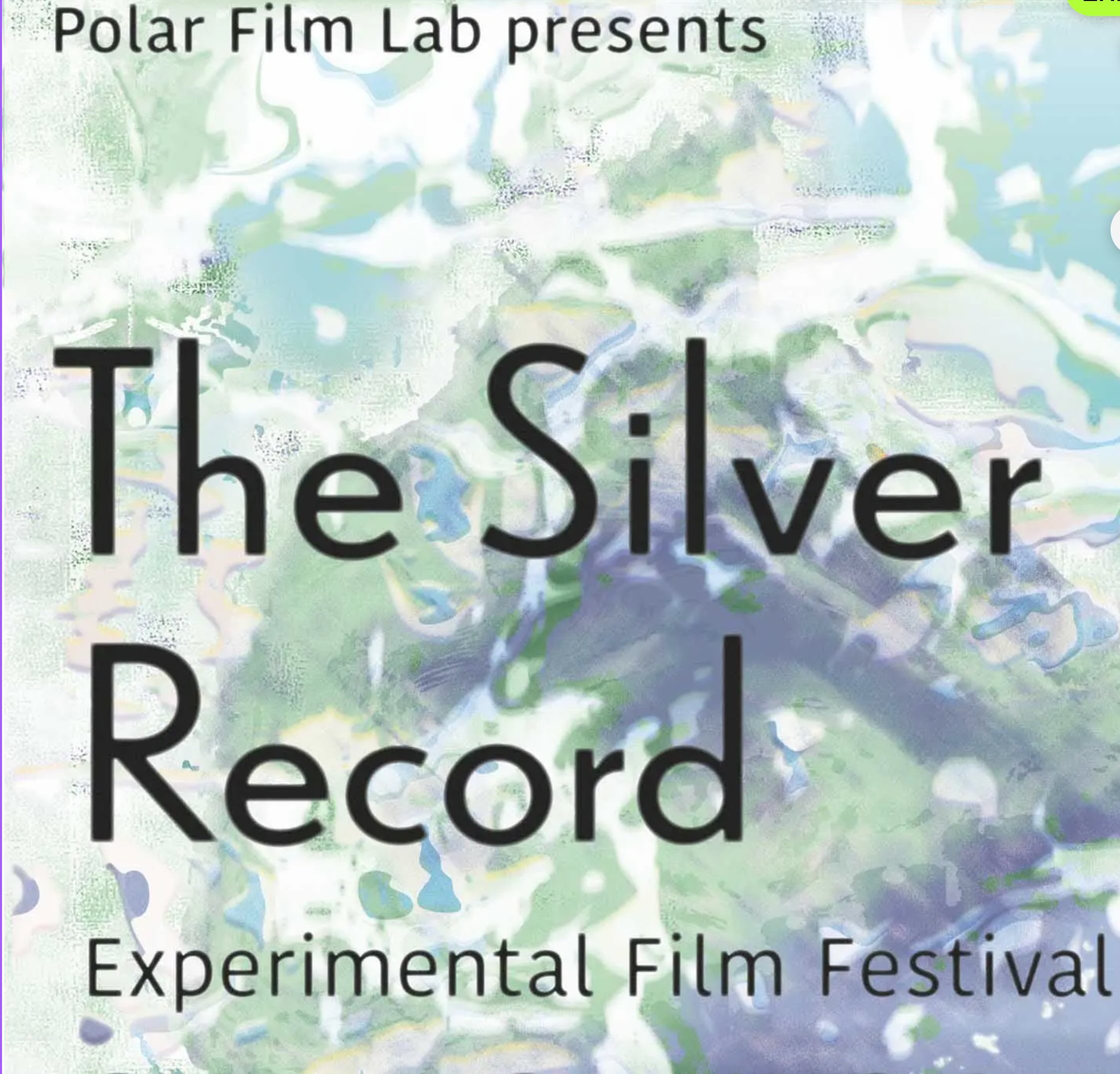
The Silver Record Festival
Claes Söderquists Landskap får äran att avsluta “Landscape(s) Reconsidered” som tillägnas fyra experimentella 16mm-filmer. Programmet ingår i festivalen The Silver Record, anordnad av Tromsø Kunstforening och Polar Film Lab. Visningskvällen inleds kl 20:30 lördagen den 10 maj på Verdensteatre, med ett annat verk från Filmforms katalog, nämligen, Light Years Expanding av Gunvor Nelson. Curaterat av Martin Grennberger och Sarah Schipschack.
Filmprogram:
Verk ur Filmforms distributionskatalog
“Landscape(s) Reconsidered” looks at how the notion of landscape, from a broad variety of cinematic perspectives, has been renegotiated, altered and processed by experimental filmmakers. In Gunvor Nelson’s Light Years Expanding, a road movie of sorts, a primarily horizontal movement, live-action animation and meticulous sonic experimentation create a playful, intense and multilayered rendering of the Swedish rural landscape. In Jun’ichi Okuyamas multi-image film Movie Watching, shot on 35mm and projected on 16mm, we see a horizon and a seascape undergoing transformations via the use of vertical shifts and an intricate collage method. In Impromptu Rose Lowder rewound the reel several times in the camera while filming, creating a distinctive temporal fluidity in relation to the locations she visited. In the last film, Landskap, Claes Söderquist examines the flows and densities of water and vegetation in the southern Swedish countryside, stressing duration, variation in light and seasonal shifts, and ultimately the primordial act of looking: “I didn’t want to create any natural poetry; rather I attempted to undress nature, to examine it.”

Candyland
I Mother’s Milk lyckas Sophie Vukovic skildra relationen mellan en mor och en dotter på ett på en gång drömskt och högst vardagligt sätt. Filmen visas på galleriet Candylands allra första filmfestival som äger rum 9 – 31 maj. Då visas även News from New York av Sara Sjölin. Curaterat av Leona Cauklija, Nora Kruse och Karin Sonnsjö Lönegren.
Filmprogram:
Verk ur Filmforms distributionskatalog
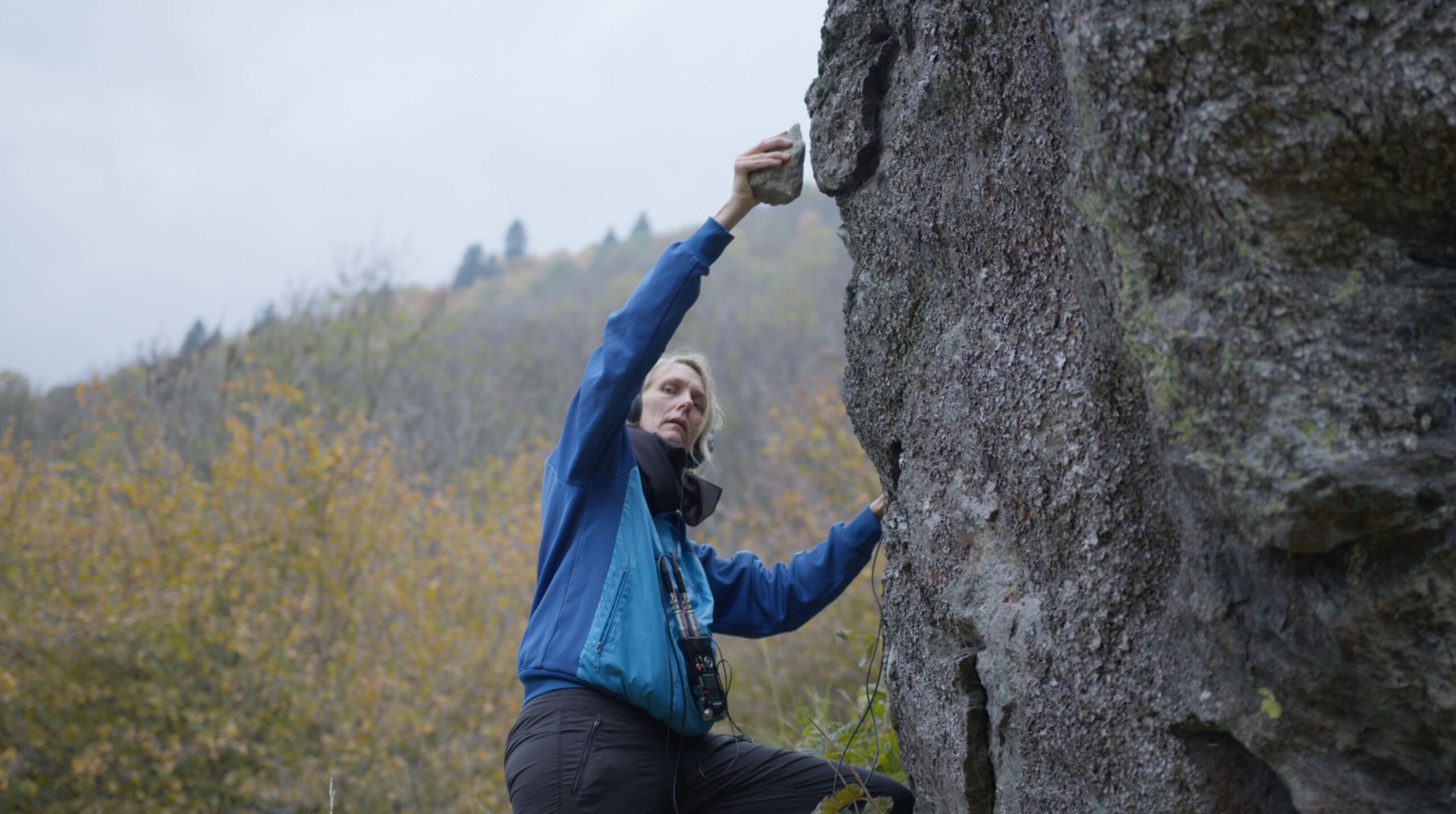
Stillbild från Ear to the Ground (Golden Monolith)
Ulrika Sparres filmserie Ear to the Ground fortsätter att fascinera. Det tredje verket (Golden Monolith & Black Monolith) visas i loop på Galleri Flack 8 maj – 14 juni. Curaterat av Eva-Lotta Holm Flach.
Senare i sommar visas det tillsammans med andra filmen i serien, (Wandering Rocks), på Lokstallet i Strömstad.
Filmprogram:
Verk ur Filmforms distributionskatalog

Anthology Film Archives logo
The No. 81 edition of the New York based Millenium Film Journal is dedicated to recently departed experimental filmmakers. In connection to the launch of the issue, the works discussed in there are screened in a special programme, among them, MY NAME IS OONA by the legendary Gunvor Nelson. The special event is taking place on Wednesday, May 7th, at Anthology Film Archives, an international centre for avant-garde, experimental, and independent cinema. Curated by Vincent Warne.
Programme:
Work distributed by Filmform
This program celebrating the launch of MFJ No. 81 “Dedication” consists of works discussed in the issue. Reflecting themes of grief and resilience, the program includes work from recently departed artists who left their indelible mark on experimental film history, alongside new work from emerging filmmakers who push film language to its ecstatic limits.
Gunvor Nelson MY NAME IS OONA (1969, 10 min, 16mm-to-DCP)
“Transitions were extremely important to Gunvor. She was always thinking about how to enter the front door of an image and how and when to get out. A shot was like an airport and the arrival and departure times of every single plane were critical. Otherwise there might be too much chaos on the tarmac! […] Gunvor once explained to me that when you finish editing your film, you will feel ecstatic. Then, there will be a profound sense of loss. To be inside the making of a film is an incredibly consuming fusion of the intellectual and the artistic. No matter what is going on in your home or in the world beyond, you have your film, and that, sometimes, is enough.” –Lynne Sachs, “Gunvor Nelson (1931-2025)”
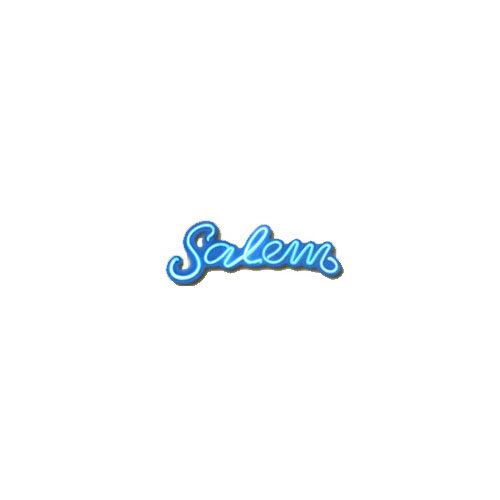
Älvdalens Baptistförening logotyp
I Glitterfabriken berättar Alexander Rynéus om huset där Sveriges enda glitterfabrik verkade under åren 1950-1970, men som också var platsen där han tillbringade mycket tid under Covid. Älvdalens Baptistförening anordnar en gratis visning onsdagen den 7 maj kl 13 i Älvdalens Biograf med efterföljande fika och möjlighet att få träffa Alexander Rynéus. Curaterat av Ewa Skeppstedt.
Filmprogram:
Verk ur Filmforms distributionskatalog
GLITTERFABRIKEN – en historia om ett hus.
Filmen Glitterfabriken är berättelsen om ett hus nära Västansjö i Dalarna som mellan åren 1950 – 1970 inhyste Sveriges enda glitterfabrik.
En färgsprakande meditation över stjärnor, naturen och julgransglitter där allt det vardagliga får ett magiskt skimmer, berättad av filmaren och regissören Alexander Rynéus.
GLITTERFABRIKEN visas på Älvdalens Biograf onsdag 7 maj kl 13:00 (51 minuter). Ingen kostnad.
Efter föreställningen bjuder vi på Biofika i Salem där du får tillfälle att träffa Alexander och kanske några av skådespelarna.
VÄLKOMMEN!
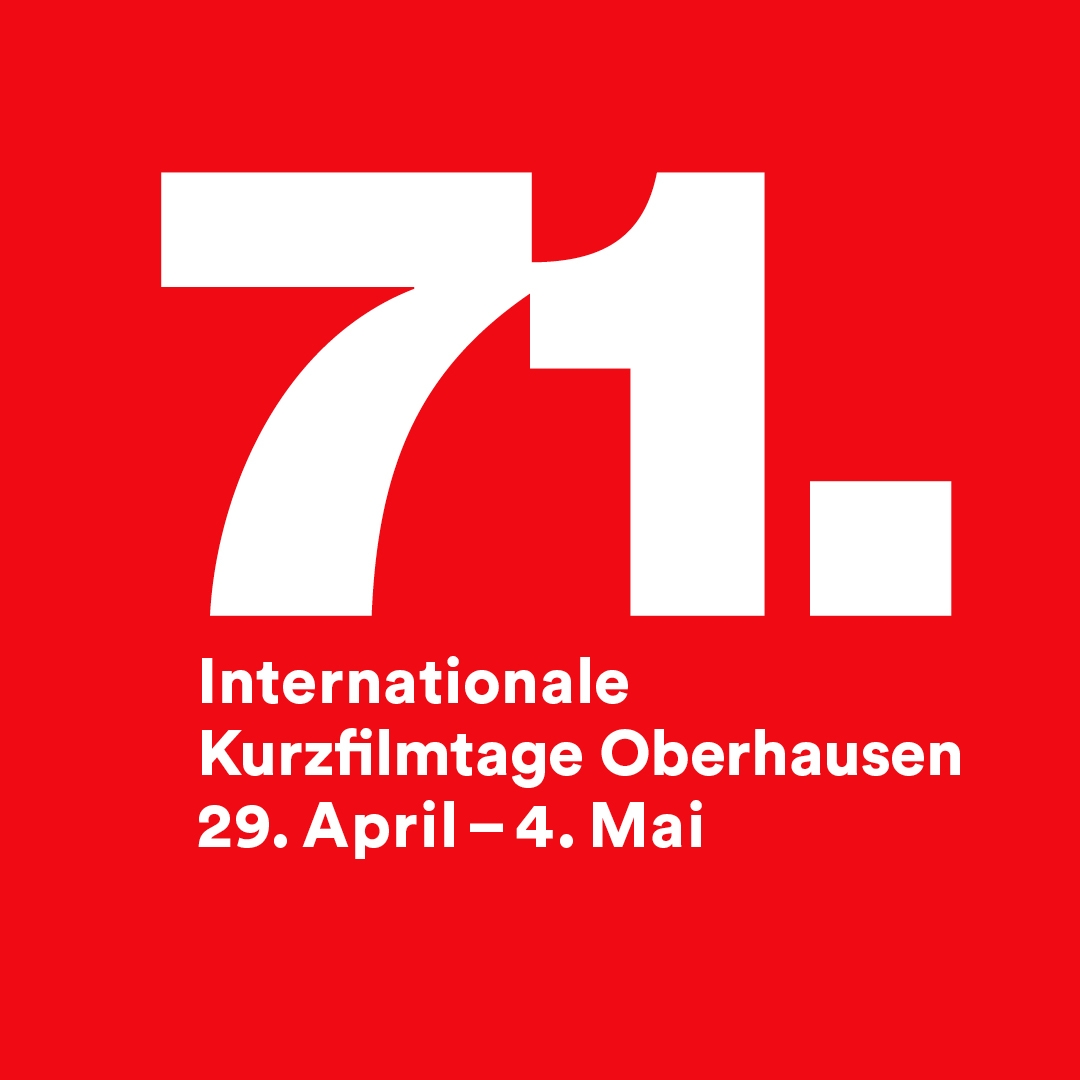
71st Internationale Kurzfilmtage Oberhausen
A selection of new acquisitions from the Filmform distribution catalogue will be presented in the programme Filmform News 2025 at the 71st International Short Film Festival Oberhausen on May 2nd. The programme will be presented by Anna-Karin Larsson & Andreas Bertman from Filmform.
Lost and found
This year’s programme highlights both brand new as well as several remarkable rediscoveries from the Filmform collection. Covering topics such as the materiality of film and photography, the programme explores both local monsters and myths as well as the postindustrial cultural and environmental impact of the Agfa factory in Wolfen. Together with the Swedish Film Institute, Filmform is proud to present the spectacular reconstruction of a complex and unique piece of Swedish film history – the double projected film Amen from 1964, by Carl Slättne, active in the Situationist oriented artist group Filmligan. The programme also pays tribute to the memory of recently passed Gunvor Nelson, the grand old dame of Swedish experimental cinema – here seen in a unique and until now lost portrait from 1972 by the American filmmaker J.T. Vale in Pittsburgh. Acting as a developing bath for lost films and forgotten histories – prints, bodies and memories slowly appear in the silvery lake that constitutes this programme.
Programme:
Works distributed by Filmform
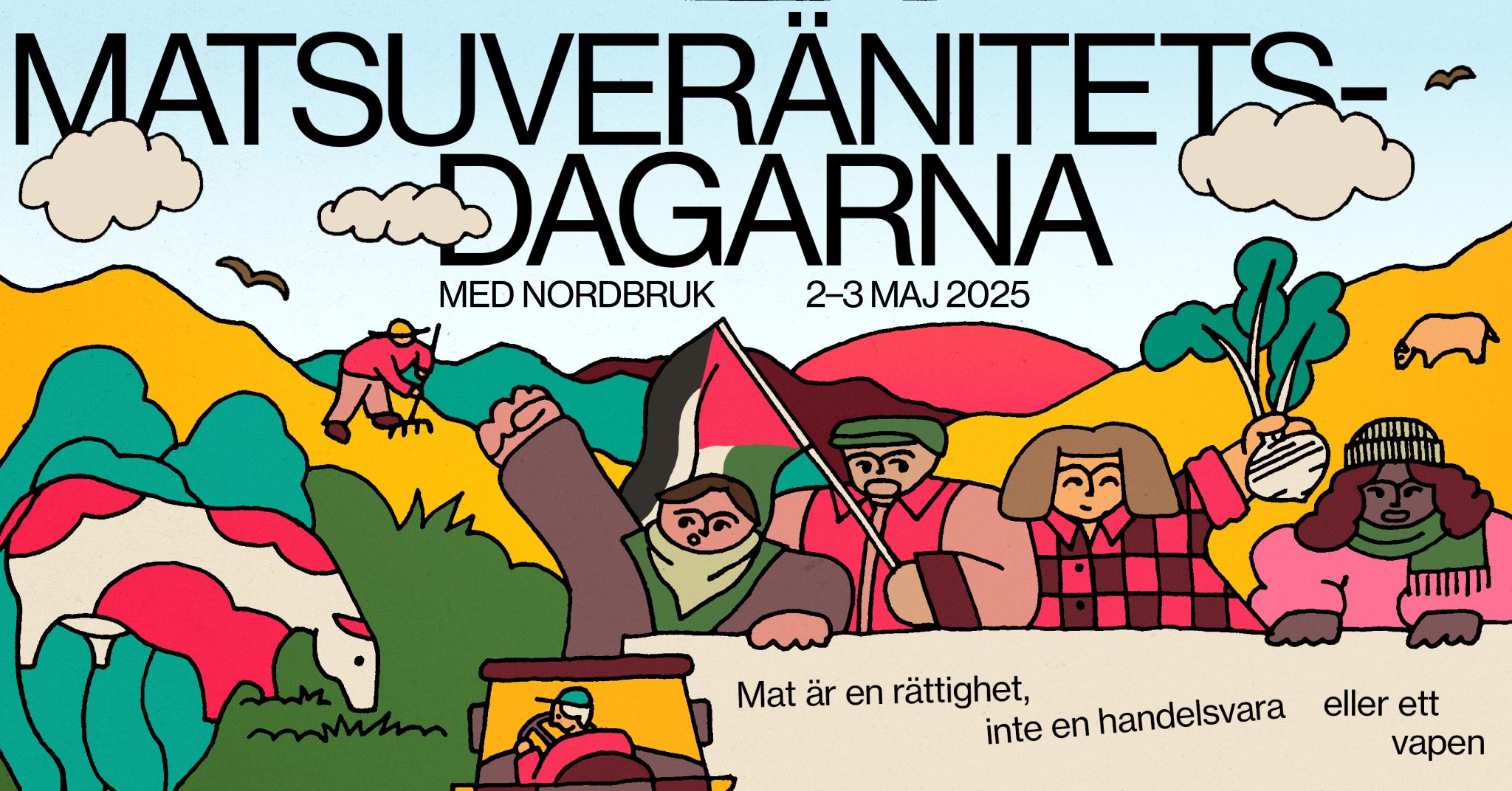
Matsuveränitetsdagarna
I Cultivating Abundance berättar Åsa Sonjasdotter om bakgrunden till dagens monokulturutveckling inom fröindustri. Långfilmen är gjord i dialog med Hans Larsson från föreningen Allkorn som främst är inriktad på bevarandet av kultursorter. Filmvisningen fredagen den 2 maj inkluderar samtal med konstnären och avslutar den första dagen av “Matsuveränitetsdagarna” som arrangeras av NOrdBruk, en svensk bonde- och naturbrukarorganisation som Åsa Sonjasdotter är engagerad i. Curaterat av Sarasvati Shrestha.
Mer om filmen berättas i tidskriften “NON #6. Marken. Eller: Regler kring avverkning och andra (naturvårdsliga) restriktioner”, utgiven av den konstnärsdrivna föreningen The non existent Center i Ställbergs gruva. Där kommer snart ett annat verk från Filmform visas, nämligen En mammas kropp av Jonelle Twum 31 maj – 20 september 2025.
Filmprogram:
Verk ur Filmforms distributionskatalog
20.30-22.00 Film: Odla överflöd, Cultivating abundance, Regi Åsa Sonjasdotter
Filmsamtal med regissör Åsa Sonjasdotter från NOrdBruk. Filmen skildrar uppfinningen av växtförädling i monokulturer som den utfördes på Svenska Utsädesföreningen från 1880-talet. Metoden byggde på idéer om genetisk ”renhet” och ”originalitet”, en kvasi-vetenskap som ligger till grund för dagens frölagar och fröindustrins krav på royalties. Filmen följer vidare växtförädlaren Hans Larsson och föreningen Allkorns återtagande av de bondeförädlade sädesslagen som frystes ner i genbanker efter monokulturens övertagande. Cultivating Abundance har skapats i dialog mellan Hans Larsson, Allkorn och konstnären Åsa Sonjasdotter.
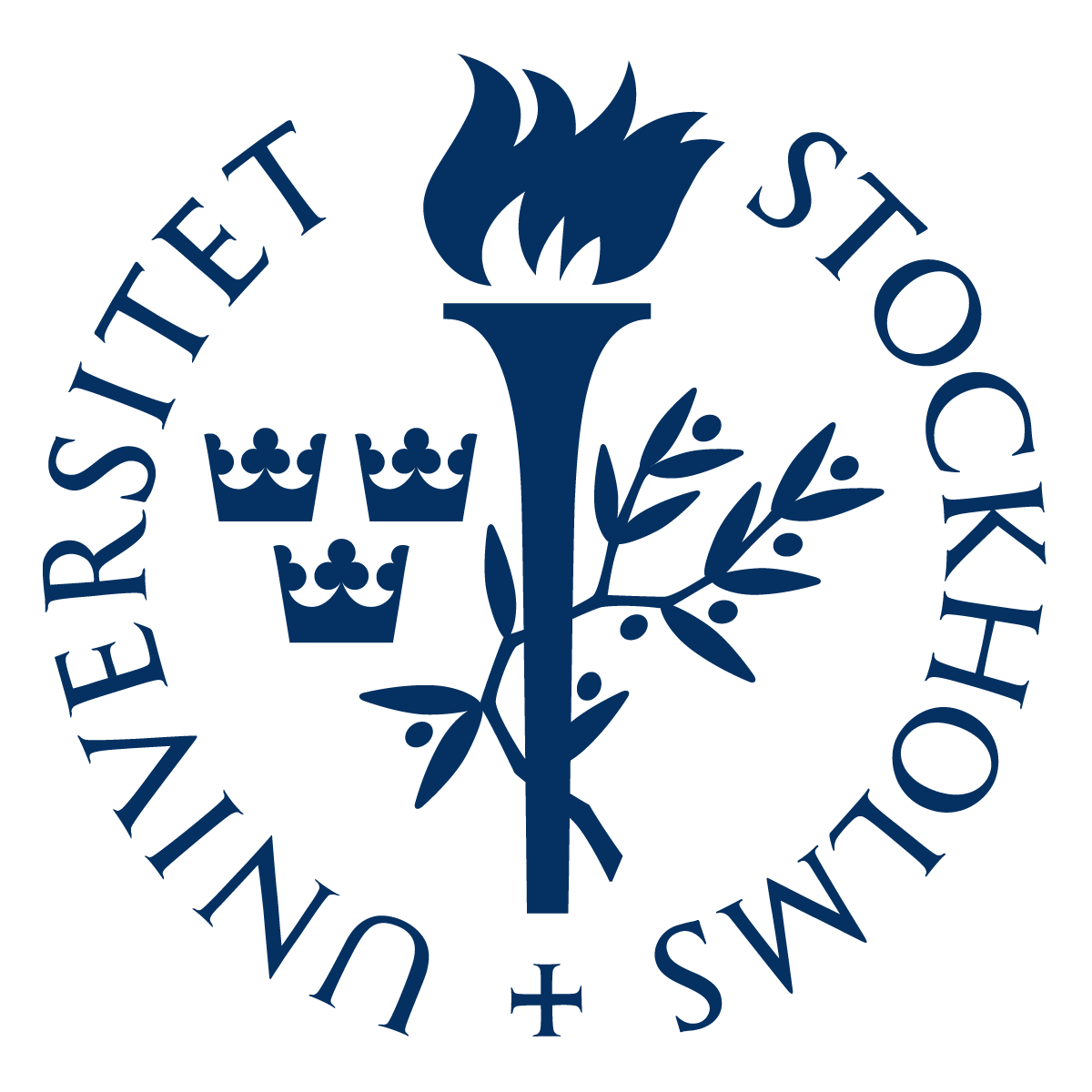
Stockholms universitet
Jyoti Mistrys Cause of Death visas tisdagen den 29 april på doktorandkurs under ansvar av professor Marina Dahlquist.
Filmprogram:
Verk ur Filmforms distributionskatalog
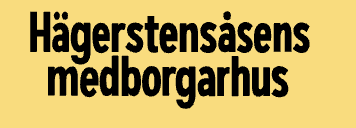
Hägerstensåsens Medborgarhus
Kontoret, Skärholmen av Mats Eriksson Dunér visas tisdagen den 22 april i ett filmprogram som denna gång riktar in sig på klassamhället i Sverige. Det dysfunktionella, misskommunikation och utanförskap är i fokus när Film i Samtidskonsten fortsätter sin filmserie “Svenska berättelser”. Curaterat av Martin Grennberger och Nathalie Åhbeck.
Filmprogram:
Verk ur Filmforms distributionskatalog
Svenska Berättelser är ett filmprogram och en inventering av filmer som sträcker sig över sju decennier och över den rika svenska dokumentära traditionen, och inkluderar såväl mockumentärer, konstfilmer som tidiga videoverk och experimentfilmer. Genom att hålla uttrycksformerna interagerande undersöker programmet olika sätt som konstnärer och filmare förhållit sig till vårt historiska och modernistiska arv, det svenska klassamhället, men också till skevheten i den svenska självrepresentationen. Flertalet filmer tar formen av berättarexperiment, som motsätter sig att på ett enkelt sätt sorteras och kategoriseras, men som trots allt skildrar brytpunkterna mellan det gamla och det nya, mellan generationer, och erfarenheter av att vara en del av samhället och att stå utanför det.
PROGRAM
Nollbudget Videodirekt:
Samförståndsmannen, Projekt Handikapp
2011, 11 min, digital
Mia Engberg:
The Stars We Are
1997, 28 min, digital
Solveig Nordlund:
Bergtagen
1994, 8 min, digital
Mats Eriksson Dunér:
Kontoret, Skärholmen
2013, 40 min, digital
Film i Samtidskonsten fortsätter serien Svenska Berättelser med ett program med kortfilmer som lyfter fram den icke-kommunikativa skevhetens, den sociala dysfunktionens och utanförskapets såriga närvaro i det svenska klassamhället. I Samförståndsmannen, Projekt Handikapp, gjord inom ramen för Malmöbaserade kollektivet Nollbudget Videodirekt, fungerar Lennart, ordförande i en ideel förening, som medlare i en drastiskt uppstånden konflikt mellan en rullstolsburen projektarbetare och föreningens vaktmästare. Genom fokusförskjutning, förvriden humor, lyckas denna uppvisning i “samstämmighet” leda oss bort från det verkliga problemet. I Mia Engbergs The Stars We Are följer vi Kalle, gay, skinnskalle och HIV-positiv under hans sista julledighet i livet. Det är både en skildring av komplex vänskap och ett liv färgat av missbruk, självvald isolering och stråk av misantropi, samtidigt som det är ett melankoliskt och inkännande porträtt av ett annat Stockholm. I Bergtagen filmar Solveig Nordlund via en serie åkningar missbrukare och narkomaner i centrala Stockholm. Människans förfrämligande omsluten av en modern, kall arkitektur, vilket kan leda tankarna till den brittiska författaren och dystopiska satirikern JG Ballard, en viktig referenspunkt för Nordlund. På ljudsidan hör vi samtal och meddelanden från föräldrar, vänner, arbetsledare, och denna brutna kontakt bildar här en hallucinatoriskt mörk inramning. Mats Eriksson Dunér har länge varit intresserad av det kollektivas relation till organisering, alternativa urbana rum, sociala gemenskaper. I Kontoret, Skärholmen lyssnar vi på Kristian, en av de hemlösa som bodde i det husvagnsläger som låg intill Kungens Kurva i Skärholmen mellan åren 2007-2011. De boendes relation till platsen och samhället i stort avhandlas, det kollektiva och personliga rör sig sömlöst in i varandra här, och här fångas det upp av tablåartade kamerainställningar.
Film i Samtidskonsten finansieras med stöd från Kulturrådet.
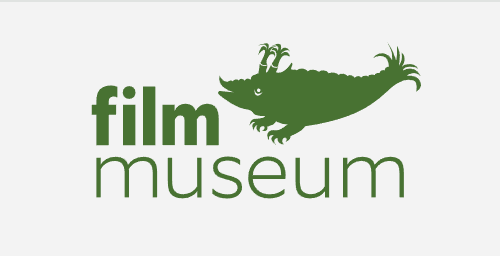
Austrian Film Museum logo
Works distributed by Filmform build up most of the two-day screening event “Sweden Images: The Amos Vogel Atlas 20” at the Austrian Film Museum. The programme is dedicated to the recently deceased artists Gunvor Nelson, whose oeuvre is represented by KIRSA NICHOLINA (1969) as well as the “found footage” REUNION, and Staffan Lamm. Russelltribunalen (2006) by the latter is the newest film in the programme which chronologically streches back as far as to Reinhold Holtermann’s Stockholmsbilder – experiment (1929). Curated by Martin Grennberger and Stefan Ramstedt who are in attendance.
Programme:
Works distributed by Filmform
What images of Sweden exist beyond the major canonized names whose radiance and international fame have forced all other images to the side, as in so many other countries with small film production histories? This program moves between formal experiments, activist documentaries, and animated films focused on kinetic research, investigating some of these hidden traces, broken narratives, and alternative histories.
The selection includes amateur filmmaker Reinhold Holtermann’s Stockholmsbilder (1930), which can be considered as the first Swedish experimental film due to its imaginative and suggestive camera editing; films made in the context of different movements and groups – such as Arbetsgruppen för film (later Filmform), Svenska Filmligan, and FilmCentrum – and works displaying, in one way or another, connections between Swedish experimental film culture, international avant-garde films, and art.
The program is dedicated to Gunvor Nelson and Staffan Lamm, both of whom recently passed away. They are very different filmmakers: Nelson is the most famous Swedish experimental filmmaker, Lamm a hardly known documentary and essay filmer. Yet, their different aesthetic approaches reflect the breadth of Swedish avant-garde film culture and also encompass the various political methods which are gathered in this program. (Stefan Ramstedt, Martin Grennberger / Translation: Ted Fendt)
With Stefan Ramstedt and Martin Grennberger in attendance.
Amos Vogel (1921–2012), an Austrian-born Jew, became one of the most important figures in international film culture after his emigration to the United States. The Amos Vogel Atlas is a series dedicated continuing Vogel’s oppositional legacy alongside the study of his literary estate, which is deposited in the Film Museum. Rarities from the collection represent key focal points.
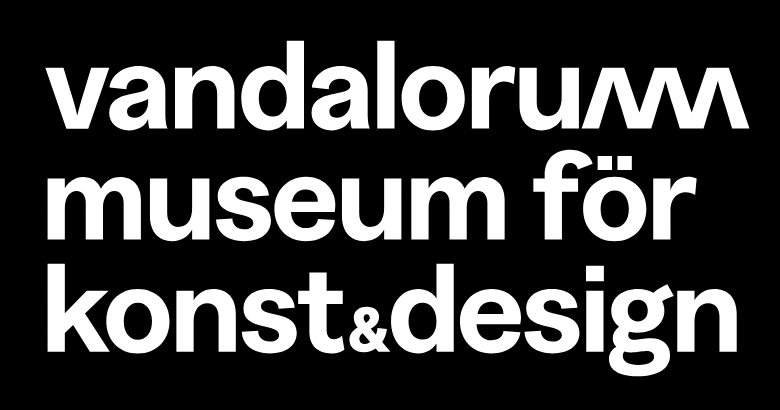
Vandalorum
De vita händerna av Rut Hillarp och Study in Optical Rhythm av den nyligen avlidne Björn Lüning visas i loop på Vandalorum museum för konst & design. Visningen sker 14-27 april i samarbete med Värnamo Filmhistoriska Festival, Sveriges enda festival med inriktning på den svenska filmhistorien. Curaterat av Clara Gustavsson.
Filmprogram:
Verk ur Filmforms distributionskatalog

Filmkoop Wien
In collaboration with Filmkoop Wien, we warmly invite you to “The Sound of Sweden”, an evening of experimental cinema that unfolds like a visual and sonic poem. The journey opens with My Name is Oona, Nelson’s final breakthrough on the American avant-garde scene, where Gunvor Nelson’s daughter recites the days of the week creating a loop engaging her name. The mood deepens with EMS No 1, an interplay of abstract sound and image challenging conventional film form. As the night progresses, How Pure is the Journey? invites you to experience the transformation of rituals into visual art. The experience finds its close with Light Years, which blends film with animation to evoke the rhythms of Sweden’s countryside. Curated by Andreas Bertman, Cosma Grosser and Markus Maicher.
Programme:
Works distributed by Filmform
In collaboration with Filmform, we warmly invite you to “The Sound of Sweden”, an evening of experimental cinema that unfolds like a visual and sonic poem. The journey opens with My Name is Oona, Nelson’s final breakthrough on the American avant-garde scene, where Gunvor Nelson’s daughter recites the days of the week creating a loop engaging her name. The mood deepens with EMS No 1, an interplay of abstract sound and image challenging conventional film form. As the night progresses, How Pure is the Journey? invites you to experience the transformation of rituals into visual art. The experience finds its close with Light Years, which blends film with animation to evoke the rhythms of Sweden’s countryside.
Join us for an exploration where each film reveals its own perspective on time, sound, and image. Let’s celebrate an evening of Swedish experimental films. In presence of Andreas Bertman, producer and curator at Filmform.
Filmform (est. 1950) is dedicated to preservation, promotion and worldwide distribution of experimental film and video art. Constantly expanding, the distribution catalogue spans from 1924 to the present, including works by Sweden’s most prominent artists and filmmakers, available to rent for public screenings and exhibitions as well as for educational purposes. /Filmform
My Name is Oona was Nelson’s final breakthrough on the American avant-garde film scene. The sound consists of Nelson’s daughter, Oona, repeating the names of the days of the week and of her saying “my name is Oona”. The latter is edited into an expressive rythmical structure that accompanies the visual structure of the film that plunges into the experience of a child.
EMS No 1 is an abstract sound/image composition where sound and image were composed together, the first in an experimentation project at Swedish Television. The robot’s voice in the beginning of EMS nr 1 was recorded at the Swedish Transmission Laboratory at the Royal Institute of Technology. EMS nr 1 was included in a feature film, Psychadelica Blues, where the EMS-parts got to represent the psychadelic experiences. EMS nr 1 received the main award at the Art Biennial in Paris, 1967, The Swedish Film Institute’s Quality Prize 1966 and also about thirty international film awards.
How Pure is the Journey? continues Byrne’s cinematic work focusing on the different parts and functions of the ritual. In this film, the transformative act of the ritual is a short closing sequence, instead it is all the preparations leading up to this act that we witness. Two women perform a chain of actions; first, flowers, plants and vegetation are picked. These are then used to dye pieces of fabric. Further on the pieces of fabric are put together and sewn by hand into a larger piece of fabric. A ritual object has been created. But where does one draw the line for when the ritual begins or ends?
Light Years is the second film of Nelson’s remarkable series of collage films in which she is blending animation with live-action. Frame Line (1983) that was the first, evolved around Stockholm and Sweden, and with Light Years Nelson expanded into the Swedish countryside and landscape. The film is a long journey through landscapes and images, an ingenious road-movie in which Nelson encourages the viewer to look and to listen.
Furthermore, we would like to draw attention to “Schwedenbilder at the Austrian Filmmuseum” on April 16th-17th.

Filmform and independent film curator Martin Grennberger are pleased to present a 16mm screening with Australian duo Richard Tuohy and Dianna Barrie. They are internationally known for their handcrafted films which are distinguished by inventive in-camera techniques, unconventional approaches to the projector, and experimental explorations of filmstrips, print stocks and darkroom processes. They are also founders of the artist-run film lab nanolab, which specializes in small gauge film processing. Tuohy and Barrie’s work encompasses both expanded cinema and single screen presentations, and the screening at Filmform will present a selection of single screen works from 2019-2025. Sonically elaborate, often with an emphasis on structure and process, these are films that viscerally enhance, complexify and revitalize the dynamic relations between form and content.
PLEASE NOTE:
Doors open at 6.30, the screening starts at 7PM. The ticket price is 60 SEK. RSVP to info@filmform.com in order to book a ticket. First come, first served. Limited amount of seats.
PROGRAMME:
In and Out a Window, 2021, 12 min
Mesmo Rio – Same River, 2019, 7 min
Self-portrait with Bag, 2020, 6 mins
Tooborac, 2025, 9 min
Nude, Descending, 2025, 9 mins
Fear of Floating, 2024, 7 mins
The Land at Night, 2024, 14 mins
Total running time: 64 min
All films above by Richard Tuohy and Dianna Barrie. The programme will be introduced by Martin Grennberger in conversation with Richard and Dianna.
ABOUT THE FILMMAKERS:
Richard Tuohy (b. 1969, Melbourne) began making works on super 8 in the late nineteen eighties. His films have screened at venues including the Melbourne IFF, EMAF (Osnabruck), Rotterdam IFF, New York FF, Ann Arbor and Media City and he has toured Europe, the Americas and Asia presenting solo programs of his work. His works are firmly in the ‘hand-made’ film tradition. An advocate for the possibilities of hand made cinema, Tuohy has devoted much time and effort in sharing his knowledge through workshops and classes both in his native Australia and internationally.
Dianna Barrie (b. 1972, Melbourne) found her way into filmmaking as a middle ground between the pursuit of abstract music and philosophy. Ever pushing the limits of the hand processing of super 8 led to the establishment of nanolab with Richard Tuohy, and into the intersection of hand making and industrial cinema technology. This exploration has spread beyond individual work to the establishment of Artist Film Workshop, where celluloid is embraced and advocated by a community of practitioners in Melbourne.
ABOUT THE FILMS:
In and Out a Window, 2021, 12 min
Our front window, from inside and out. Made during a long covid lockdown. A product of the distraction and abstraction that resulted from a lot of staring at the same pieces of glass.
Mesmo Rio – Same River, 2019, 7 min
Rocks become sand become rocks become sand. All life is life on the beach. You can never step into the same river, or walk the same city, twice.
Self-portrait with Bag, 2020, 6 min
A camera-less portrait of the artist. Super 8 cartridges placed inside a black cotton bag, the film advanced via a hand crank. The tiny gaps in the fabric weave make for dozens (hundreds? thousands?) of tiny pinholes.
Tooborac, 2025, 9 min
Granite tors scattered over 20 square kilometers around Tooborac in central Victoria dance in ecstatic celebration of their own endurance.
Nude, Descending, 2025, 9 min
A performer descends the stairs. Direct film mattes frame glimpses of the motion. Phase-looping duplicates the glimpses into a cascade of humanity. A game played with colour separations, motion following hand scratched and painted mattes and a perpetual descending figure.
Fear of Floating, 2024, 7 min
Humanity approaches in an ineluctable wave of uncertainty and hope. A ferry crossing in Mumbai stands here for all such places and times of human expansion and human vulnerability.
The Land at Night, 2024, 14 min
I used to find the dusk a very unsettling time, as though the approaching night was something to be feared. It was as if, once night fell you could not flee, and had to face unspecified consequences. Maybe the land
remembers and the night will reveal what we might have done…

Färgfabriken
Liselotte Wajstedt, Maria Magnusson, Marte Aas och den nyligen avlidna Gunvor Nelson är representerade med var sitt verk på utställningen “At the End of a World – experimentella rörliga bilder”. Filmerna visas i loop 8 april-4 maj på Färgfabriken i Stockholm. Curaterat av David Revés.
Filmprogram:
Verk ur Filmforms distributionskatalog
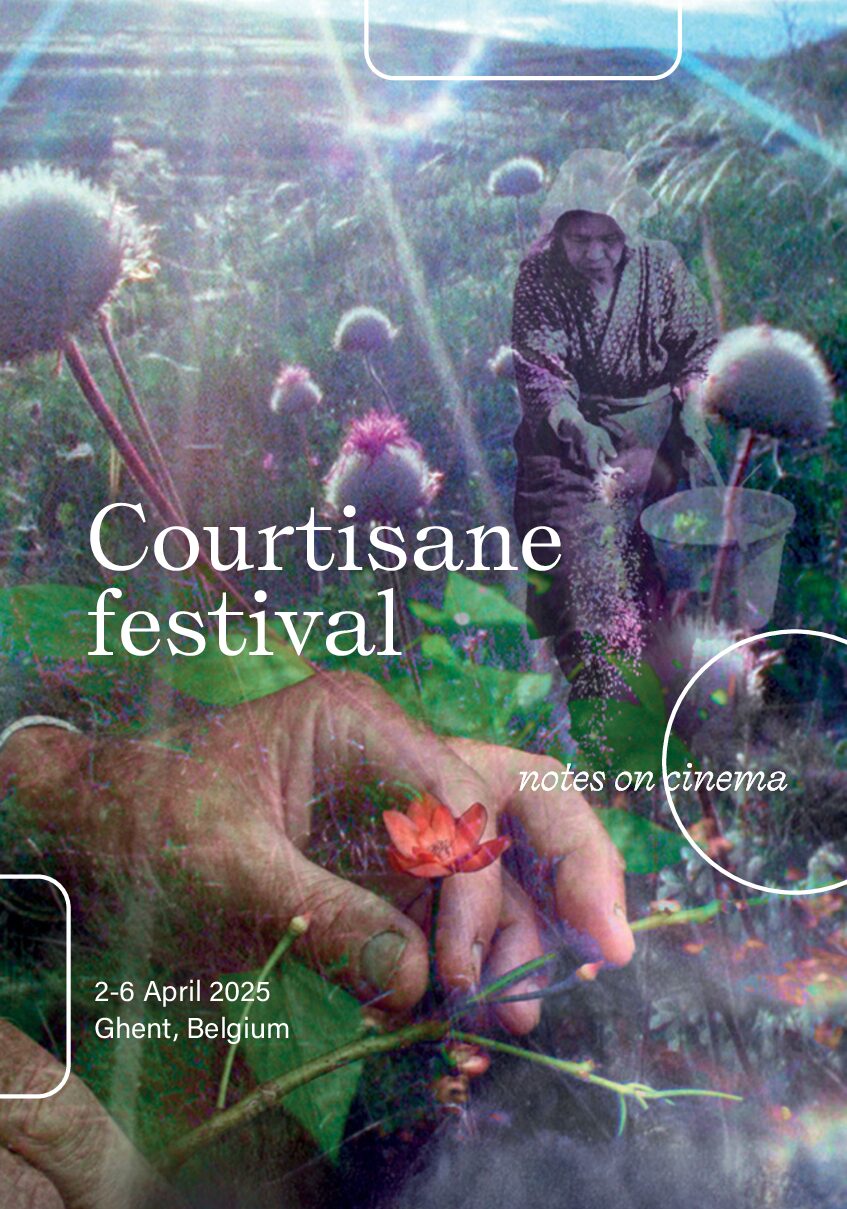
Courtisane Festival 2025
True to Life by Gunvor Nelson is in the Courtisane Festival 2025, April 2nd-6th. The film is included in the programme “Short films” of the section “Still There Are Seeds to Be Gathered” and will be screened on Saturday, April 5th. Curated by Ditte Claus.
Film programme:
Work distributed by Filmform

Filmoteca Española, Madrid
Filmoteca Español in Madrid, Spain, honours the newly deceased avantgarde artist Gunvor Nelson with a grand four-day programme “Gunvor Nelson. Como la vida misma”. The selected films are divided into four sections. “The Big 60s” covers the years 1967-1972 and consists of five works. During the second day of the programme, titled “Sensorial materiality”, the films Moons Pool and Before Need Redressed are screened. The section “Returning to Kristinehamn” is devoted to the years 1979-1991 and Nelson’s birth town. Finally, “Towards the Image” consists of three works from the period 1983-1988. Curated by John Sundholm and Julia Mettenleiter.
Programme:
Works distributed by Filmform

Konstväxlingar på Skanstull
Sedan 2004 har videokonst på Skanstulls tunnelbana gjort resenärerna sällskap som en del av programmet “Konstväxlingar i tunnelbanan”. I vår visas Leo Reis Metamorfoser, i loop från 1 april till 30 juni. Curaterat av Ulrika Lublin.
Filmprogram:
Verk ur Filmforms distributionskatalog
2025 LEO REIS
I tunnelbanan är vi ständigt i rörelse, på väg någonstans. Nu får denna plats en ny dimension genom visningen av Leo Reis experimentella film Metamorfoser från 1961 i Konstväxlingar vid Skanstull.
METAMORFOSER
Animationen är en hypnotisk och poetisk resa genom abstrakta former som genomgår oavbrutna förvandlingar – en rytmisk dans av färg och ljus.
Metamorfoser liknar ingen annan film från sin samtid. Dess uttryck påminner om abstrakt måleri. Leo Reis, som i grunden var målare, ville utforska vad bilden kunde bli bortom duken.
Under fem års tid arbetade han metodiskt med att skapa 22 000 enskilda bilder, där teckningar projicerades som diabilder och byggdes upp till en rörlig optisk arkitektur. Resultatet är en visuell upplevelse där färgen blir ljus och tiden tycks ta fysisk form.
OM KONSTNÄREN
Leo Reis (1926–2001) utbildade sig till målare vid Valands konstskola i Göteborg. I sin konstnärliga verksamhet utvecklade han en egen teori som han kallade optisk arkitektur, och som han arbetade med i en mängd konstnärliga tekniker. I sin tid var Reis en etablerad och välkänd målare men tillhörde inte någon filmgemenskap. Han arbetade självständigt, och hans första film Metamorfoser, producerades i en studio han hade på det gamla slottet Torup i Skåne.
För Reis var konsten ett sätt att hitta ny kunskap om naturen utan att avbilda den. Han inspirerades av klassiskt måleri och geometriska principer, men hans konst blickade samtidigt framåt mot digitalt skapande. Leo Reis kan ses som en länk mellan tidig abstrakt animation och den digitala konst som syns än idag genom sin film Metamorfoser.
På Skanstulls tunnelbanestation förmedlas samtidigt en känsla av både nostalgi och blick mot framtiden. Filmen visas i tre månader med start april 2025.
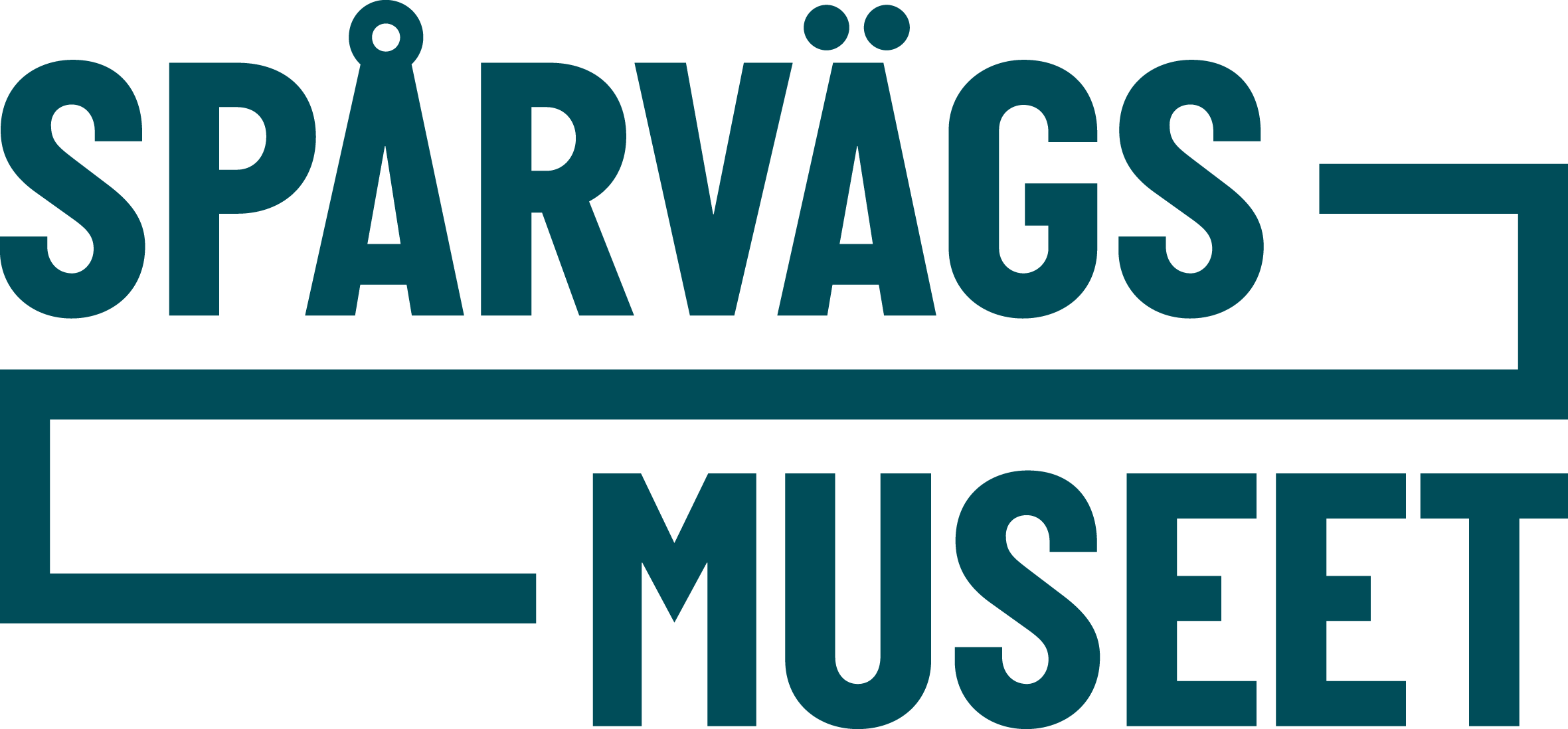
Spårvägsmuseet logotyp
In addition to Skanstull metro station screening, the Konstväxlingar programme will be mirrored at Spårvägsmuseet in Stockholm. From April 1st to 8th, Leo Reis’ Metamorfoser will be visible at two different places at the same time, on a continuous loop.
Programme:
Work distributed by Filmform
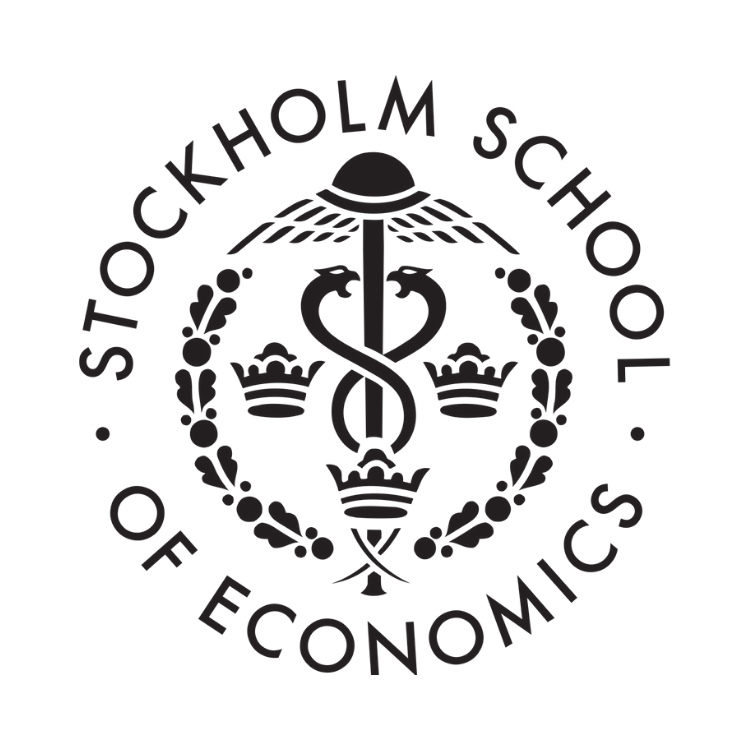
Handelshögskolan i Stockholm logotyp
Handelshögskolan i Stockholm fortsätter att visa verk från Filmform inom ramen för sitt Art Initiative. Under hela april visas Gunvor Nelsons MY NAME IS OONA i loop. Från Filmform visades tidigare Kinchen av Måns Månsson samt Elitakrobaten och På tunnelbanan av Catti Brandelius inom ramen för samma konstprogram. Curaterat av Tinni Ernsjöö Rappe.
Filmprogram:
Verk ur Filmforms distributionskatalog

Folkets Bio Regina Östersund
Liselotte Wajstedts EADNI är ett av verken “Allt talar: samisk mytologi och naturens kraft i tre konstfilmer”. Visningen äger rum på Folkets Bio Regina i Östersund lördagen den 29 mars och efterföljs av ett samtal. Filmprogrammet är curaterat av Anneli Bäckman och är ett samarbete mellan mellan Gaaltije Saemien Museume, Jamtli, Jämtlands läns konstförening, Filmpool – Kultur i Jämtland Härjedalen och Folkets Bio Regina.
Filmprogram:
Verk ur Filmforms distributionskatalog
I tre konstfilmer av de samiska filmskaparna Marja Helander, Liselotte Wajstedt och Sissel M Bergh möter vi tre kvinnliga mytologiska väsen ur den samiska berättartraditionen. I sägnerna talar de från en djup samhörighet med naturen. Vad hör vi om vi lyssnar?
Efter filmvisningen sker ett samtal mellan konstnären och filmskaparen Sissel M Bergh, Patricia Fjellgren, samisk kulturarbetare och Anneli Bäckman, curator på Gaaltije Saemien Museume.
EADNI
Liselotte Wajstedt
7:00 min. (2023)
Háldi är ett skogsväsen som sägs locka barn in i skogens djup. Men är hon bara en del av samisk mytologi, eller är hon lika verklig som du och jag? Vem är hon egentligen, och varför skulle hon vilja locka barn ut i skogen? EADNI, som betyder mor, är en visuellt mångbottnad saga som väcker eftertanke. I berättelsen om Háldi ryms en skapelseberättelse med hoppet om att vi ska skydda naturen och säkerställa att den eviga cykeln fortsätter. Den oändliga sagan om livets innersta väsen.
Liselotte Wajstedt är en multimediakonstnär och filmskapare från Giron/Kiruna, bosatt och verksam i Stockholm. Hennes konstnärskap rymmer film och video, collage, måleri, fotografi, skulptur, textil och installation.
Programmet är ett samarbete mellan Gaaltije Saemien Museume, Jamtli, Jämtland läns konstförening, Filmpool – Kultur i Jämtland Härjedalen och Folkets Bio Regina.
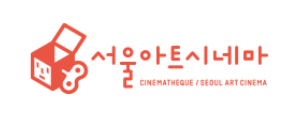
Cinematheque Seoul Art Cinema
Cinematheque Seoul Art Cinema celebrates Gunvor Nelson on Thursday, March 27th. The programme offers a selection of films, including the avantgarde filmmaker’s breakthrough Schmeerguntz, My Name Is Oona which is based on her daughter’s talk, and Nelson’s commemoration of her mother titled Time Being. Curated by Pip Chodorov.
Programme:
Works distributed by Filmform

All My Dreams Have Come True
“All My Dreams Have Come True” is a collaboration between Filmform and Soft Fiction Project, an initiative run by an artist duo from Northern Ireland. The aim of the event is to reflect upon the space of intersections between science and the human essence. The evening on Wednesday, March 26th, commences with Motions of Electrons (1952) by Billy Klüver. After that, the screening of works from Filmform starts with Edy Fong’s Siliconic Superhighway, followed by films by Lina Selander, Katarina Löfström, Lars Siltberg and Annika Ström, whose All My Dreams Have Come True entitles the whole event. Edy Fung is the curator of the programme together with Alessia Cargnelli and Emily McFarland from Soft Fiction Project.
Programme:
Works distributed by Filmform
About the programme:
The incipit is the 1950s educational Disney-style animated film by Billy Klüver, where the motion of the electrons is explained for a wider audience. The film was produced as a substitute for Klüver’s doctoral thesis at the KTH Royal Institute of Technology of Stockholm. Animation is further developed in Edy Fung’s speculative visual and sonic fiction concerning silicon-based lifeforms and their evolution. Fung understands silicon not only as a physical material, but as a catalyst to pose ethical and existential questions, such as the role played by our (post)human bodies in a machine-dominated world.
Bringing the spectator back to human scale environments – from the lunar winter landscape of Kiev’s countryside to fossils – Lenin’s Lamp Glows in the Peasant’s Hut by Lina Selander presents multiple layers of narrative, starting from the 1986’s nuclear disaster in Chernobyl, Ukraine. Selander explores human life intended as a mechanism of social structures and ideological systems. In contrast, Katarina Löfström’s immersive, hypnotic works A Void and Chronos investigates the physical experiences of space (or lack thereof) and time through colour animation, sound and abstraction. To follow, the black & white Visusomatic – a film by Lars Siltberg shot in a laboratory for physical research – offers methods of intense observation. The film focuses on an ultra-high vacuum (UHV) system used to clear the air in the small chambers in which various tests on substances smaller than air particles take place. The slow, almost-surgical investigation of this technology goes from the macro to the granular, particles becoming pixels.
The programme concludes with Annika Ström’s poetic piece All My Dreams Have Come True, where the repeated trial and error mixes with the warmth and intimacy of personal relationships, perhaps alluding to the limitations and complexities of human nature.

Grandma's Grammar poster
Gunvor Nelson’s RED SHIFT opens up the Grandma’s Grammar evening on Saturday, March 22th, at Sapieha Palace in Vilnius, Lithuania. The screening is part of the “Moving Images” series and is dedicated to the presence of grandmothers in films. Curated by Inesa Brasiske and Elena Gorfinkel.
Programme:
Work distributed by Filmform
Grandmothers populate the body of non-fiction and experimental cinemas, and Grandma’s Grammar aims to point at the diversity of their appearance in historical and contemporary film practices.
Grandmothers are multiplicitous subjects, archives, and prisms for modes of sodality, solidarity and kinship. They are privileged subjects for the work of testimony, the construction of history, and of the lineage of women’s lived experience. And further the grandmother models alternative modes of perception, of thinking and feeling across alterity and horizons of historical experience.
Grandmothers have long been feminist filmic resources, a way to think laterally across generations, articulating a relationship to past traditions and temporalities, to social rituals, the historicity of gender and of patriarchy’s demands, and the witnessing of historical trauma and oppression. In this the grandmother also operates as a very specific proxy for the thickness and entanglement of any given story of lineage, inheritance, or the bequeathing of storytelling itself. What is narrated by the grandmother? And what does grandmother refuse to narrate? Such questions have long animated feminist historiography and theories of gendered and raced subjectivity, especially as the oral traditions and embodied knowledges transmitted across generations have sustained alternative narrations of history and History.
One of feminist history’s desires, untold, is the desire for the grandmother.
(Revised, expanded extract from Elena Gorfinkel, “Cinema of the Grandmother,” in E. Balsom and H. Peleg eds. Feminist Worldmaking and the Moving Image. MIT Press, 2022.)
The programme features films by Barbara Hammer, Gunvor Nelson, Chiemi Shimada, and Emilija Škarnulytė. Grandma’s Grammar is curated by Elena Gorfinkel, who will present the films in person. The event will be held in English.
PROGRAMME
Red Shift
Gunvor Nelson / 1984 / Sweden / 50:00
Oscillating between extreme proximity and distance, Red Shift is a film of domestic interiors, tactile details, and mutable intergenerational dynamics. Nelson, daughter Oona, and Oona’s grandmother, Carin Grundel, appear playing family roles. Two other actors represent a “past” of mother-daughter relations. They are tethered in a relay of extreme closeups and long shots: hands grasping and tending, creased flesh, polished silver, windowed views, resonant shards of time and memory, ritual and habit. Along with gnomic proverbs and snatches of banter, Edith Kramer is heard reading excerpts from over two decades of Calamity Jane’s late 19th century letters of regret to an estranged daughter. “The years have slipped by…” In a multivalent work of generational transmission, Jane’s lamentations yoke motherhood’s psychic freight to a vaster temporal horizon.
Optic Nerve
Barbara Hammer / 1985 / USA / 16:00
Aldona
Emilija Škarnulytė / 2013 / Lithuania / 16:00
Chiyo
Chiemi Shimada / 2019 / Japan, UK / 13:00

University of Oldenburg
Ear to the Ground (Wandering Rocks) by Ulrika Sparre will be screened at the University of Oldenburg on Thursday, March 20th. The film is part of the course “Geological Media” (“Medien der Geologie”) held by professor Petra Löffler at the University of Oldenburg.
Programme:
Work distributed by Filmform

25 FPS Association
Gunvor Nelson’s Moons Pool is one five films in “Visions: Loud Echoes”, a programme to showcase as many fantastic female filmmakers. The screenings take place at Kinoteka in Zagreb on Tuesday, March 18th, and is hosted by 25 FPS, a Croatian association for promoting short and experimental films. Curated by Nika Petković.
Programme:
Work distributed by Filmform

SFC Remembering Gunvor Nelson
The avant-garde filmmaker Gunvor Nelson, who recently passed away, is celebrated at San Francisco Cinematheque. The programme “Trace Elements: Remembering Gunvor Nelson” features a selection of works from 1966 to 1998, kindly provided by Filmform and Canyon Cinema.
Programme:
Works distributed by Filmform
Gunvor Nelson (née Grundel: b. July 28, 1931; d. January 6, 2025) grew up in Kristinehamn, Sweden. Her mother was a teacher and her father was the owner and editor-in-chief of the local newspaper, Kristinehamns-Posten. On leaving school she studied at the University College of Arts, Crafts and Design in Stockholm, but moved to the US and California in 1953 to study art and art history. Nelson met her husband-to-be Robert Nelson when she was studying at the California School of Fine Arts (later known as the San Francisco Art Institute; SFAI). The Nelsons were a vital part of the new film culture that evolved in the San Francisco Bay Area and played a key role in the establishment of Canyon Cinema. Nelson subsequently taught filmmaking at SFAI 1970–1992, moving back to Kristinehamn in 1993. On her return Nelson quickly began working in digital video and was rediscovered in Swedish art circles, resulting in a number of awards and retrospectives both at home and abroad.

Bergamo Film Meeting 43
Birgitta Jansson’s awarded claymation Semesterhemmet will be screened in the Bergamo Film Meeting 43, which is held in March 8th-16th. The event takes place on the first day of the festival in section “Animation Cinema: AnReal”. Curated by Diana Cardani.
Programme:
Work distributed by Filmform
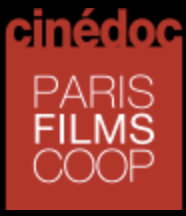
Cinédoc Paris Films Coop logo
The US-based Canyon Cinema cooperation is celebrated in Paris by a screening of some of their most influential works, among them Gunvor Nelson’s debut film Schmeerguntz and the subsequent My name is Oona. The event is part of the series “Refle-x-périmental”, organized by the association Cinédoc Paris Films Coop. It takes place on Thursday, February 27th, at the cinema Reflet Médicis, and is curated by Bárbara Janicas.
Programme:
Works distributed by Filmform
Ännu en serie verk från Filmform visas för studenter på HDK-Valand. Visningen ingår i programmet “Materiality and Experimental Aesthetics” och utforskar de teman som Mirka Dujin och Daniel Jewesbury utforskar inför sina kommande utställningar.
Filmprogram:
Verk ur Filmforms distributionskatalog
We now continue Materialities of the moving image, a series of film screenings within the framework of the HDK-Valand research cluster Materialities and Experimental Aesthetics.
This time we show more titles from Filmform’s archive, including works by Gunvor Nelson, Maria Magnusson, Peter Weiss and Conny Karlsson Lundgren.
This screening explores themes that Mirka Duijn and Daniel Jewesbury, teachers at HDK-Valand, are developing for upcoming solo exhibitions in Gothenburg.
All students at HDK-Valand are welcome!

Designoftimes
Marie Karlberg’s The Good Terrorist is one of the films in “Designoftimes”, a group exhibition of contemporary art at Gallery 3236RLS/Le Bourgeois. It is screened daily during February 25th-March 1st and open to the public. Curated by Jacques Rogers.
Programme:
Work distributed by Filmform
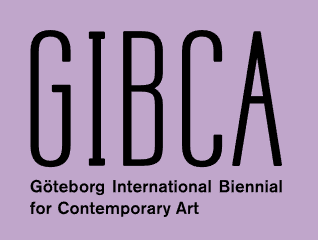
GIBCA
Måndagen den 24 februari visas sex filmer från Filmform i ett kortfilmsprogram inför GIBCA – Göteborg International Biennal for Contemporary Art som hålls i november 2025. Röda Sten Konsthall står bakom evenemanget som äger rum på Stadsbiblioteket i Göteborg. Ansvarig är Ellie Engelhem.
Filmprogram:
Verk ur Filmforms distributionskatalog
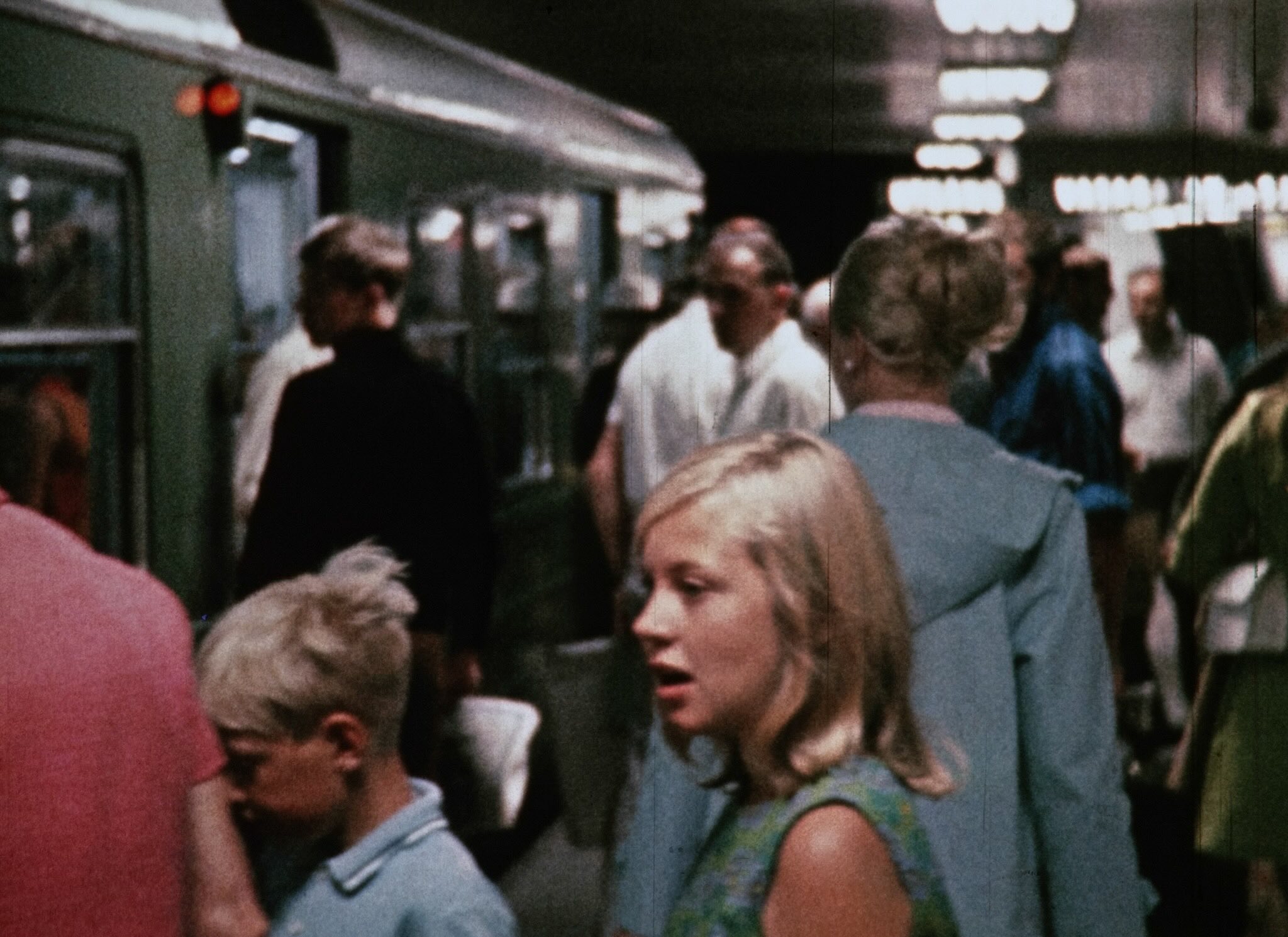
Stillbild ur Sightseeing av Peter Nestler
Sightseeing by Peter Nestler, provided by Filmform, is available online for members of Tënk France, a cooperative society for documentary cinema. Curated by Sylvain Baldus.
Programme:
Work distributed by Filmform

Kinodvor City Cinema logo
On Valentine’s Day, Elin Magnusson’s first work distributed by Filmform – Get Off – will spice up the night of erotic film at Kinodvor cinema in Ljubljana. The programme “Retrosex” is curated by Maša Peče.
Programme:
Work distributed by Filmform

Stockholms universitet
Jonelle Twums I Think of Silences When I Think of you visas fredagen den 14 februari på kursen “Rörliga bilder i genusperspektiv”, som ges av professor Malin Wahlberg.
Filmprogram:
Verk ur Filmforms distributionskatalog
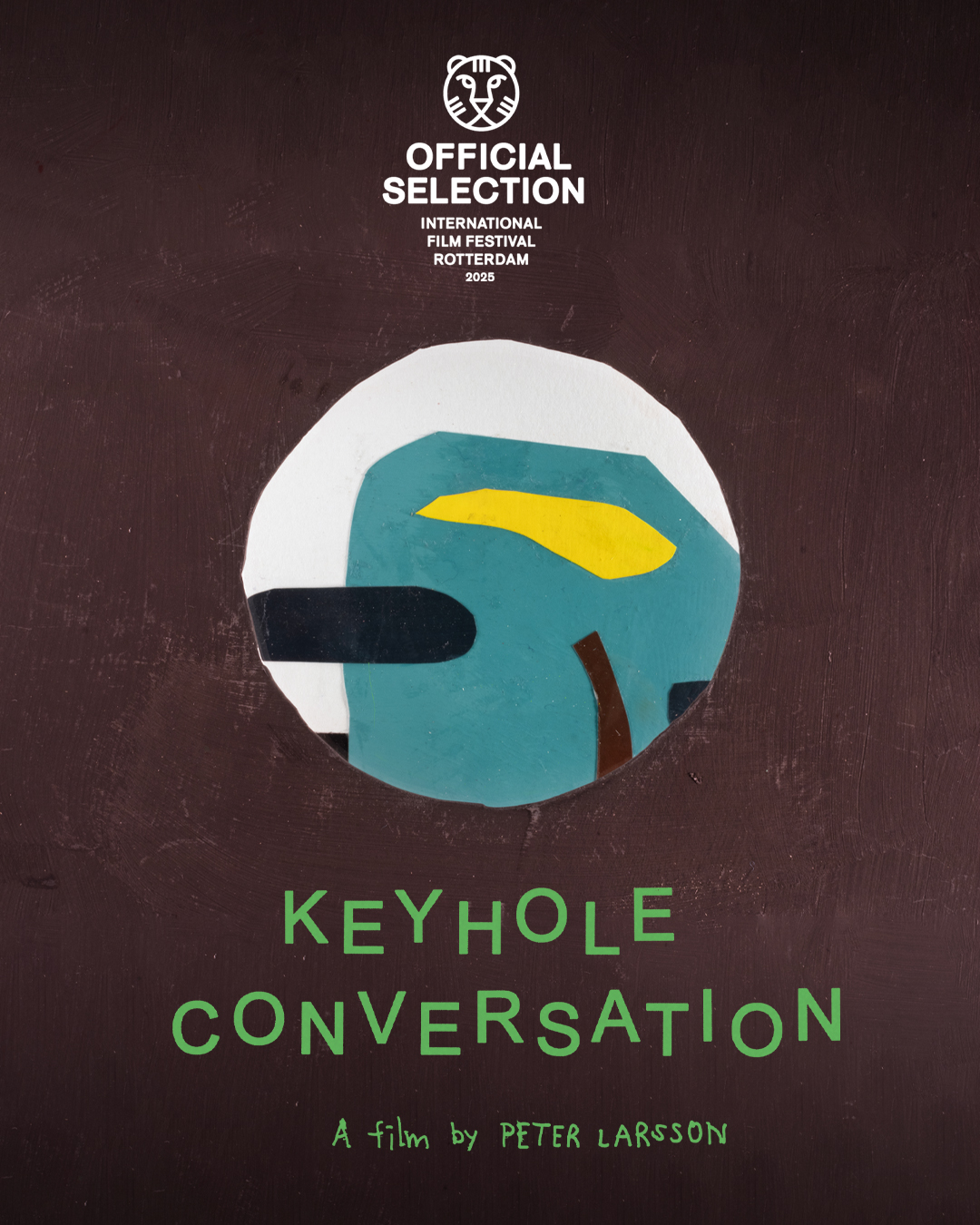
Poster: Keyhole Conversation
This upcoming week, a number of Filmform related activities will be taking place at the 2025 edition of International Filmfestival Rotterdam (IFFR).
Together with our international colleagues within the distributor network DINAMO (Distribution Network of Artists’ Moving Image Organizations), Filmform will participate in one of the two joint programmes. A cinema screening and following presentation of DINAMO, its members and the films, will be held at KINO 4 on Friday, January 31th starting 3PM in the programme Embodiment. For this programme Filmform presents the film Acting Woman (2017) by Roxy Farhat. The programme will be introduced by Filmform’s Anna-Karin Larsson and Andreas Bertman.
DINAMO: Embodiment
Friday, January 31th, 3PM. KINO 4, Programme: Embodiment
We are excited to share that the film Keyhole Conversation (2025) by Peter Larsson, distributed by Filmform, will have its world premiere at IFFR in the Short & Mid-length section programme (Un)domesticated. Peter Larsson and representatives from Filmform will be present at the premiere night at KINO 3 on Sunday, February 2nd, starting 4.15 PM.
World premiere! Keyhole Conversations
Sunday, February 2nd, 4.15PM. KINO 3, Programme: (Un)domesticated

BEFF 2025 logo
The Black Europe Film Festival of Minneapolis/Saint Paul, January 30th – February 2nd, 2025, features three works by Salad Hilowle. Sylwan is the director’s latest film and is screened before the opening of the festival as part of a workshop with Salad Hilowle himself on Wednesday, January 29th, at 6:30pm. On the last day of the festival, Erinra and Vanus Labor are screened at 11am and 2pm, respectively. The films are included in two different programmes, and the director participates in the following panel/Q&A in both. Lorenzo Fabbri is the curator.
Programme:
Works distributed by Filmform

Handelshögskolan i Stockholm logotyp
Nästa verk från Filmform att visas inom Art Initiative på Högskolan i Stockholm är Måns Månssons Kinchen från 2005. I en anda av cinéma vérité skildrar filmmakaren sportkommentatorn Lasse Kinch under Hockey-VM i Tjeckien. Tidigare visades två andra verk från Filmform inom samma program: Elitakrobaten och På tunnelbanan av Catti Brandelius. Curaterat är Tinni Ernsjöö Rappe.
Filmprogram:
Verk ur Filmforms distributionskatalog
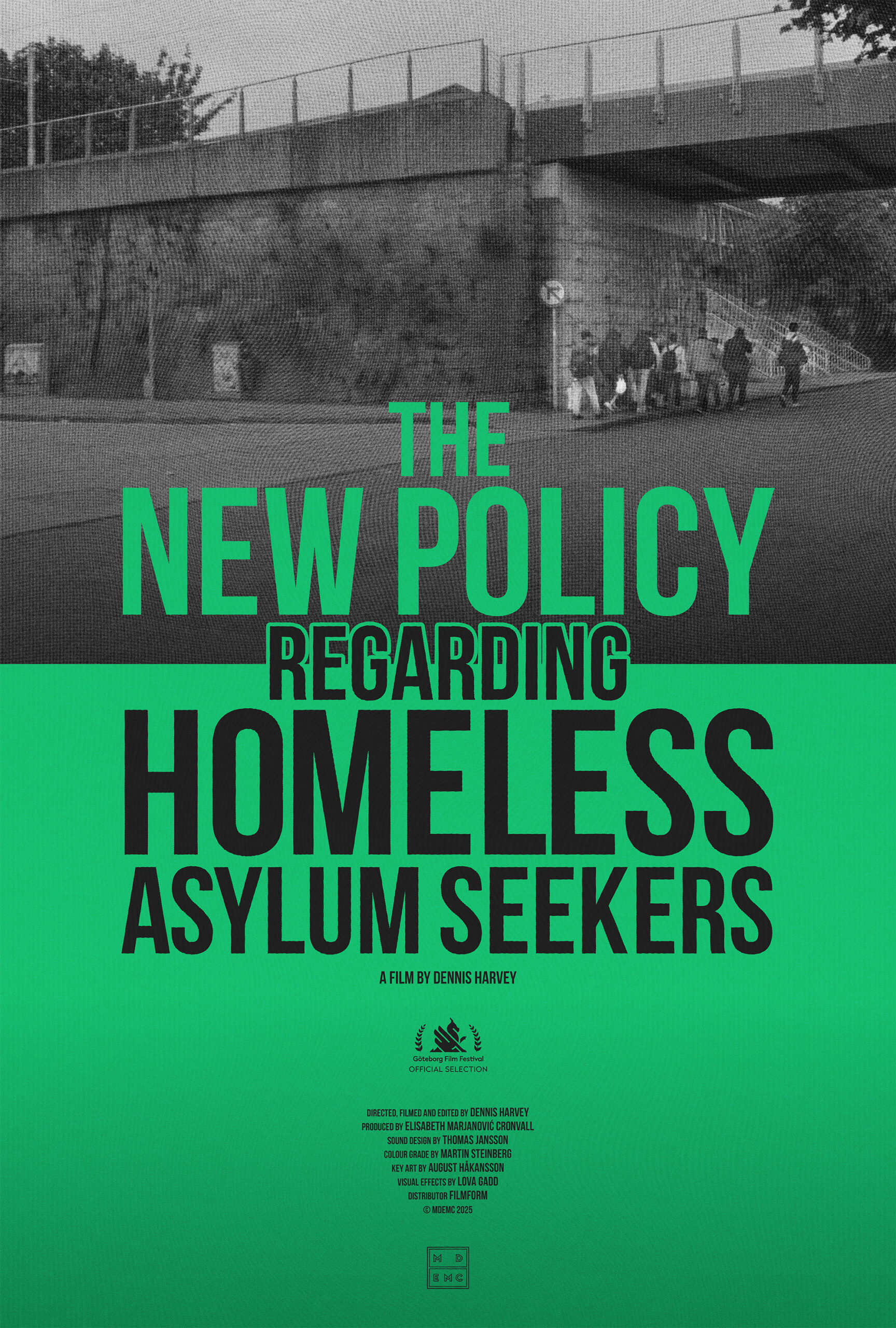
Poster: The New Policy Regarding Homeless Asylum Seekers
Filmform is honored that two recent acquisitions from the distribution catalogue will have their world premiere at Göteborg Film Festival this weekend. The New Policy Regarding Homeless Asylum Seekers by Dennis Harvey and Fear Fokol by Tuva Björk on Saturday 25th (12.45PM at Hagabion) respectively Sunday 26th (2PM at Draken). More information on the two films can be found below.
World Premiere!
Saturday, January 25th, 12:45PM, Hagabion
Dennis Harvey: The New Policy Regarding Homeless Asylum Seekers (2025, 14:28 min)
The New Policy Regarding Homeless Asylum Seekers is a follow-up to the Swedish Academy award-winning The Building and Burning of a Refugee Camp (IDFA, 2024), which followed Sami, Simon and Hasiballah–three residents of an encampment for homeless asylum seekers which was burned down by a far-right mob in Dublin in 2023. In this film, we make the conscious decision to focus on the volunteer response to the latest policy for homeless asylum seekers, rather than focussing on the asylum seekers themselves. In early 2024, the Irish government ceases to provide accommodation to all asylum seekers for the second time. While funding charities to provide tents to homeless asylum seekers, the government simultaneously orders the authorities to prevent the asylum seekers from pitching these tents.
In the film, we follow Olivia and her small group of predominantly female volunteers, who spend their mornings and evenings on the streets of Dublin helping homeless asylum seekers try to find a safe place to sleep each night. The volunteers and asylum seekers alike face constant harassment from both far-right politicians and the police.
Team:
Director: Dennis Harvey
Cinematographer: Dennis Harvey
Producer: Elisabeth Marjanović Cronvall
Graphic designer: August Håkansson
Colorist: Martin Steinberg
Sound design: Thomas Jansson
VFX: Lova Gadd
Distribution: Filmform
World Premiere!
Sunday, January 26th, 2PM, Draken.
Tuva Björk: Fear Fool (2025, 14:50 min)
A light kept on to deter makes it hard to see past your reflection. In Fear Fokol, we take a nightly ride into the fears and anxieties of Johannesburg’s wealthy inhabitants by following the work of the private security guards hired to protect them. The illusion of security slowly dissolves as we dig into a fragile climate of inequality, paranoia and masculinity in crisis.
Team:
Director: Tuva Björk
Producer: Dennis Harvey
Screenplay: Tuva Björk
Cinematographers: Tuva Björk, Sally Jacobson
Editors: Tuva Björk, Neil Wigardt
Music: Sanele Ngubane
Distribution: Filmform

HDK-Valand logotyp
Gunvor Nelsons definitiva genombrott kom med My name is Oona, där hennes dotters röst utgör stommen i filmens experimentella ljudspår. Filmen visades på Bio Valand för knappt ett år sedan och visas nu igen i ett större sammanhang, omgiven av föreläsningar, happeningar och seminarier på Högskolan för konst och design i Göteborg. Evenemanget är curaterat av Daniel Jewesbury.
Filmprogram:
Verk ur Filmforms distributionskatalog
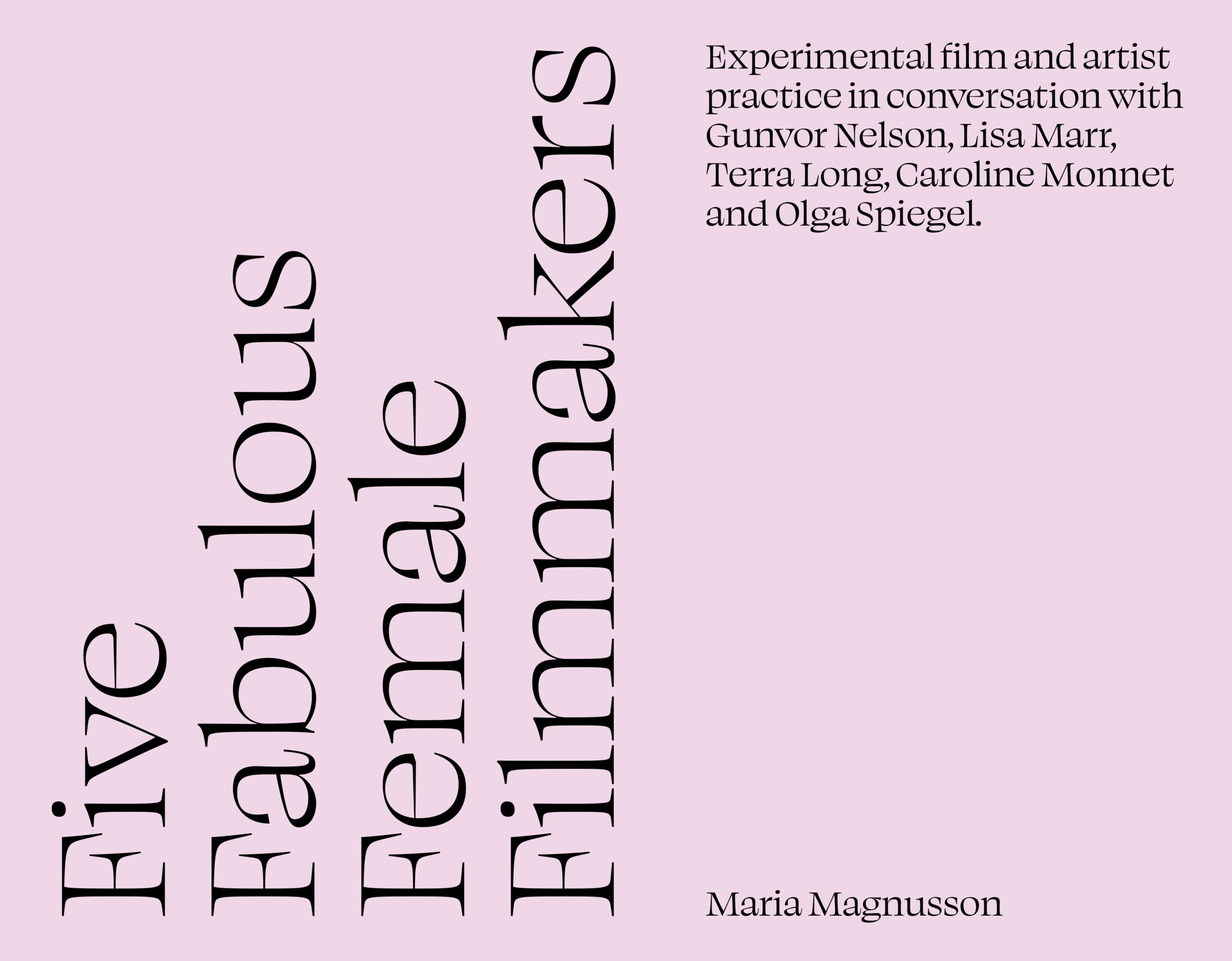
Omslag, Five Fabulous Female Filmmakers
Varmt välkommen till Stockholmsreleasen av Maria Magnussons nya bok Five Fabulous Female Filmmakers – Experimental Film and Artist Practice in Conversation with Gunvor Nelson, Lisa Marr, Terra Long, Caroline Monnet and Olga Spiegel. Under evenemanget på Filmform visas även filmen Peace (2024, 3 min) av Maria Magnusson och Lisa Marr. DJ Bruce Leenus väljer musiken under kvällen.
Datum: Tisdagen den 21januari
Tid: Dörrarna öppnas 17.30. Introduktion och samtal om boken inleds 18.00. Musik med Bruce Leenus innan och efter bokpresentationen.
Plats: Filmform, Svarvargatan 2, Stockholm
T-bana: Fridhemsplan
Fri entré, ingen föranmälan krävs.
Maria Magnusson om boken Five Fabulous Female Filmmakers:
2018 träffade jag Gunvor Nelson under några tillfällen i hennes hem och ateljé i Kristinehamn. Vi hade mycket att prata om och dessa möten utmynnade i ett längre samtal om processer och tankar kring konst och experiementfilm. Jag fick då en idé om att bjuda in internationellt verksamma kvinnliga filmare som verkar i denna tradition. Att i dialog be dem att dela med sig av sina tankar i ämnet. Filmskaparna jag har valt, representerar olika generationer men delar en kärlek till det analoga filmformatet och experimentell film. De är alla personer som jag inspirerats av på olika sätt men också mött och samarbetat med. 2013 deltog jag i Independent Imaging Retreat (mer känt som Film Farm) i Mount Forest i Kanada, grundat av Philip Hoffman och Marian McMahon. Där blev jag förälskad i analoga experimentella filmiska processer och mötte Lisa Marr, Terra Long och Caroline Monnet för första gången. Kai Ephron var artist in residence på Konstepidemin 2023 och arbetade med filmprojektet The Wheelbarrow. Han presenterade mig för sin mamma; Olga Spiegel.
Konstnären och den experimentella filmaren Gunvor Nelson är en av de mest inflytelserika kvinnliga filmskaparna inom rörelsen New America Cinema. Hon flyttade till USA redan på 1950-talet och undervisade fram till 1992 i film vid legendariska San Francisco Art Institute och flyttade därefter tillbaka till Sverige där hon bodde fram till sin död 2025. Lisa Marr är en musiker, låtskrivare, filmskapare, fotograf, och utbildare från Vernon, British Columbia, Kanada, medlem av EPFC Collective i Los Angeles och EPFC North i Vancouver. Terra Long är en kanadensisk filmskapare och medlem i Independent Imaging Retreat (The Film Farm) och F4A Collective. Caroline Monnet är en Anishinaabe franskkanadensisk bildkonstnär och filmskapare. Olga Spiegel är en psykedelisk målare och filmskapare. Hon utbildade sig i Europa innan hon etablerade sig som konstnär i New York. Olga Spiegel var en av originalmedlemmarna i Women Artist Filmmakers (WAF 1974-1981 i N.Y.).
Maria Magnusson om filmen Peace:
Peace utgår från ett funnet filmmaterial på Super 8, och är ett samarbete mellan mig och Lisa Marr. Jag bad Lisa att läsa in ordet fred på 17 olika språk: engelska, spanska, franska, tyska, italienska, holländska, svenska, ryska, polska, ungerska, grekiska, turkiska, arabiska, hebreiska, persiska, hindi och urdu. Filmen kan bland annat ses som en kommentar i en tid när fredsröster fått stå tillbaka och upprustning pågår runt om i världen.
Filmprogram:
Verk ur Filmforms distributionskatalog
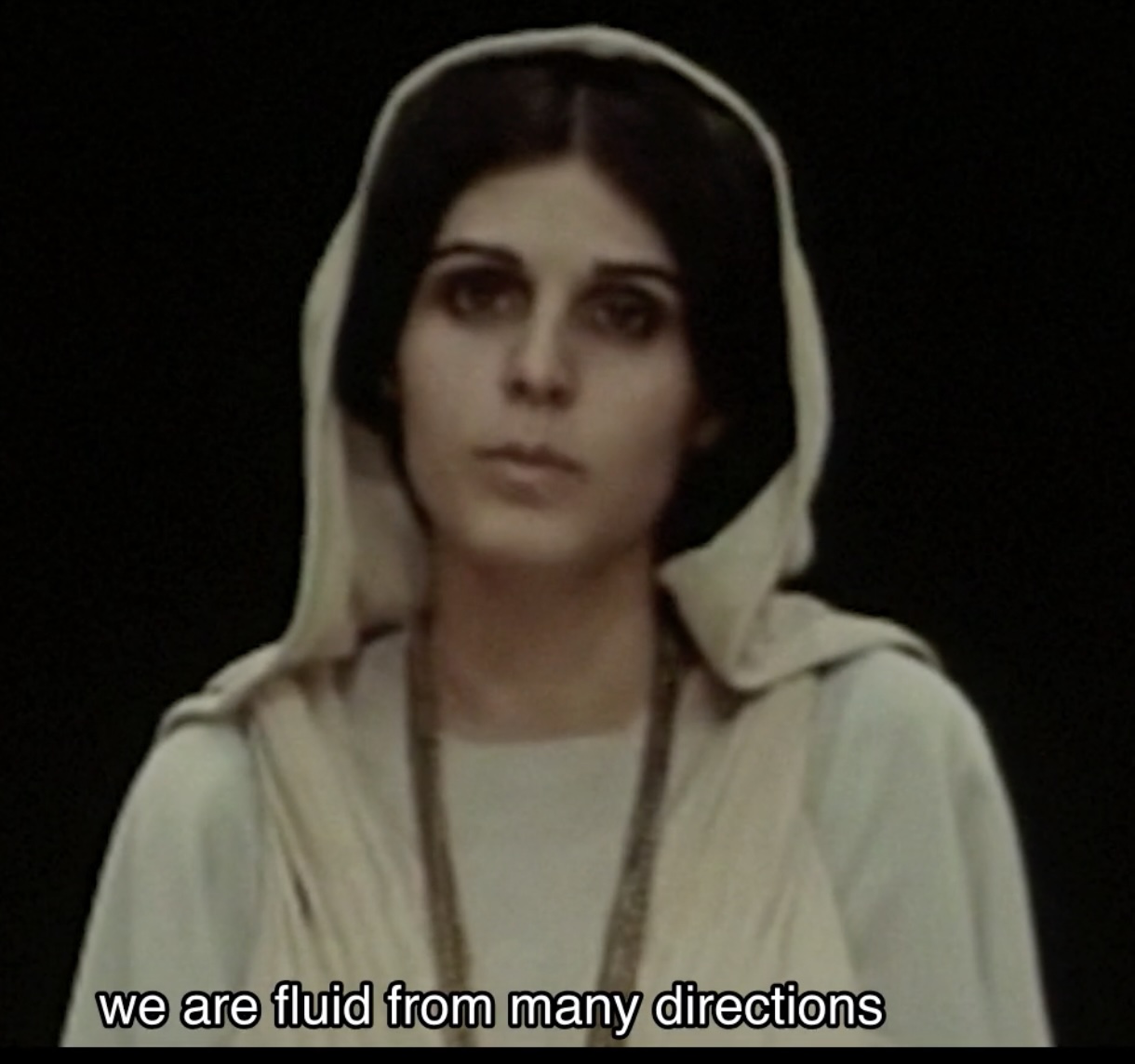
Scented Rooms (Shauheen Daneshfar, 2023)
Shauheen Daneshfars Scented Rooms visas i loop i Botkyrka konsthall i den tredje avslutande delen av utställningen “Vi är flöden från alla håll, från alla håll möts vi”, vars titel är ett citat ur själva filmen. Ytterligare två verk från Filmform ingår i utställningen. I den första delen av utställningen 26 oktober – 6 december visades Jinnah Cricket Club av Jesper Nordahl. I den andra, som pågick mellan 7 december 2024 och 17 januari 2025, visades I Think of Silences When I Think of You av Jonelle Twum. Temat för utställningen är behovet av att skapa gemenskaper och tystnader som uppstår ur olika livssituationer; curatorn är Mini Davarasl.
Filmprogram:
Verk ur Filmforms distributionskatalog

Spårvägsmuseet logotyp
In addition to Skanstull metro station screening, the Konstväxlingar programme will be mirrored at Spårvägsmuseet in Stockholm. From January 2nd to 9th Petra Lindholm’s Bystanders will be visible at two different places at the same time, on a continuous loop.
Programme:
Work distributed by Filmform

Konstväxlingar på Skanstull
Since 2004 video art accompanies passengers at Skanstull metro station. This winter, Petra Lindholm’s Bystanders will be on display for the Konstväxlingar programme, presented by Ulrika Lublin. The film will be screened on loop from January 1st to March 31th.
Programme:
Work distributed by Filmform